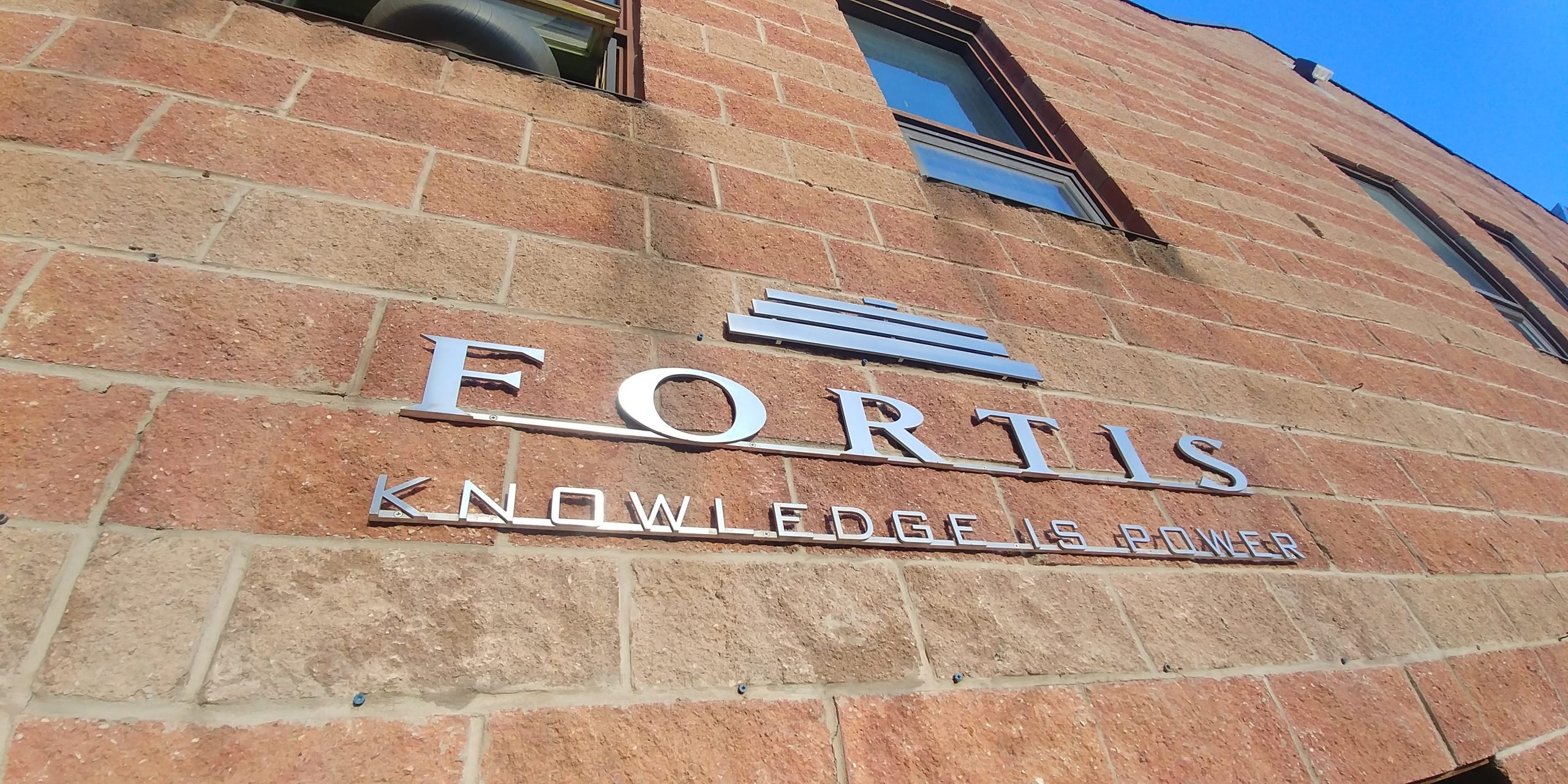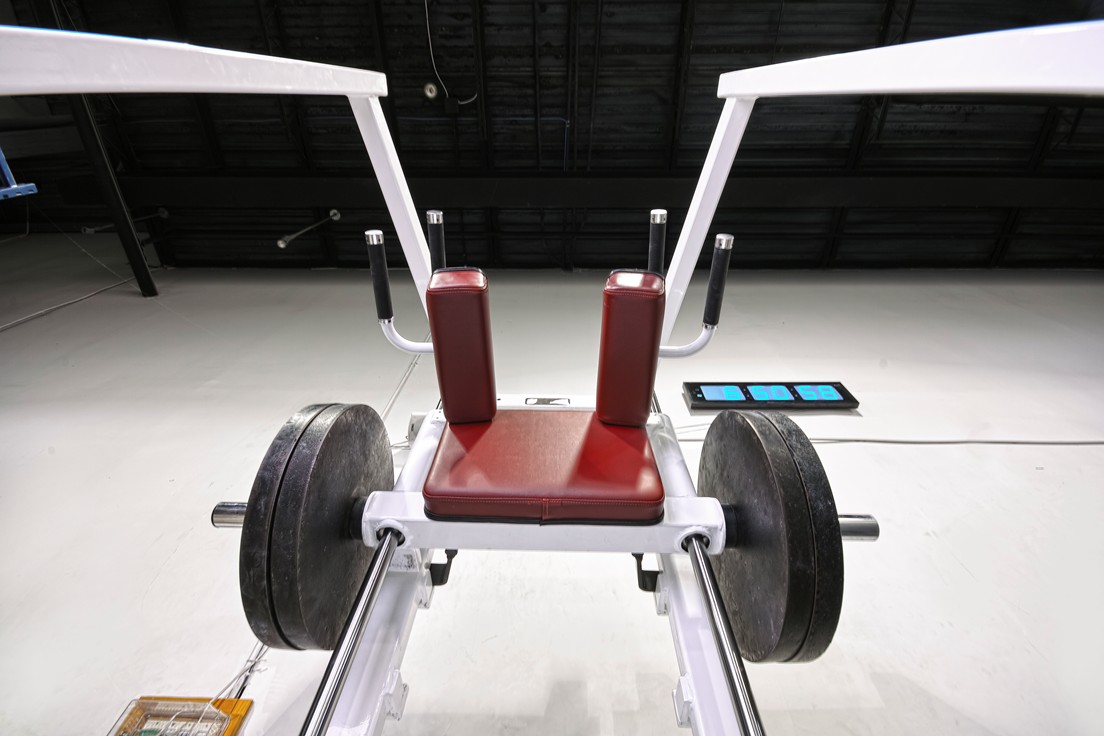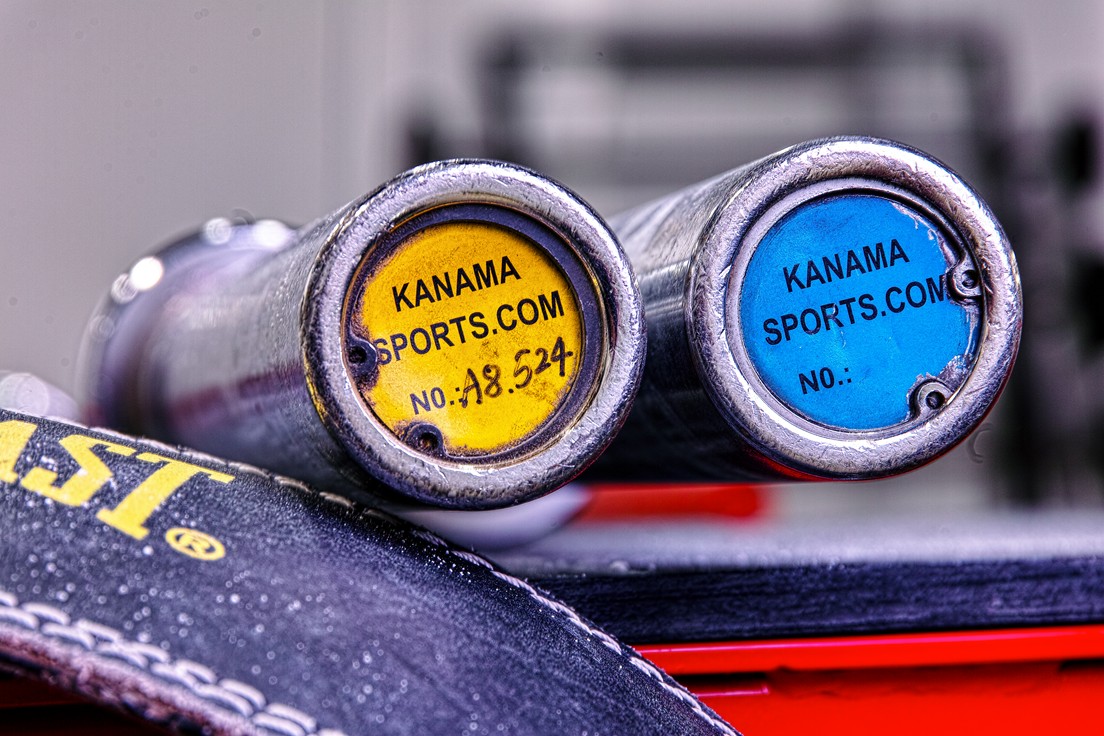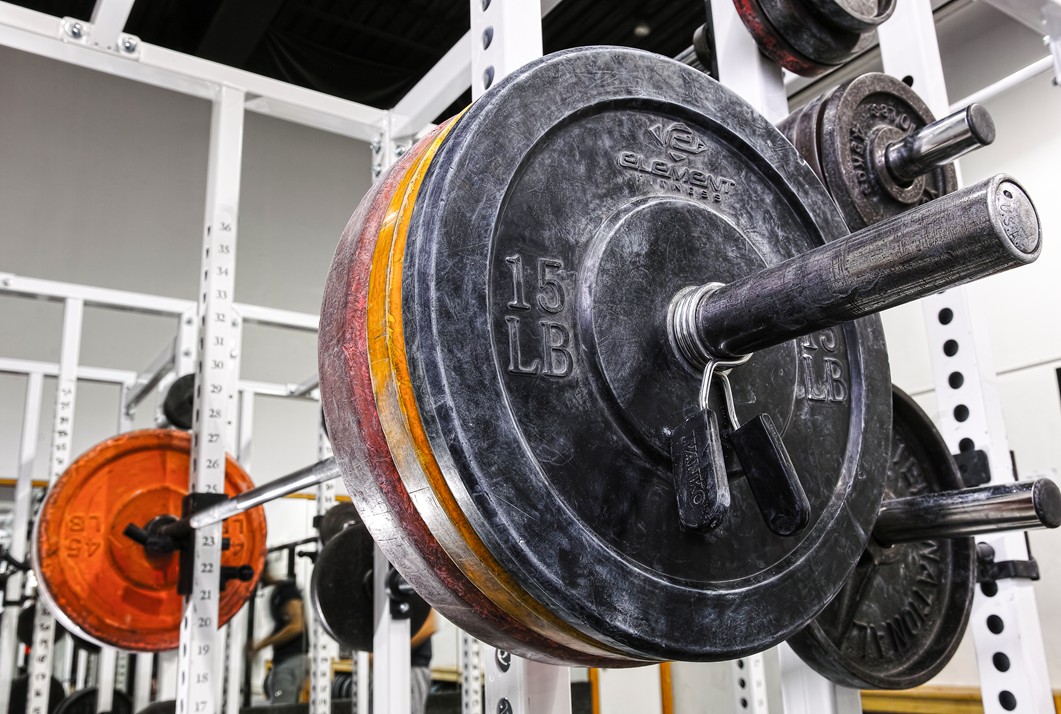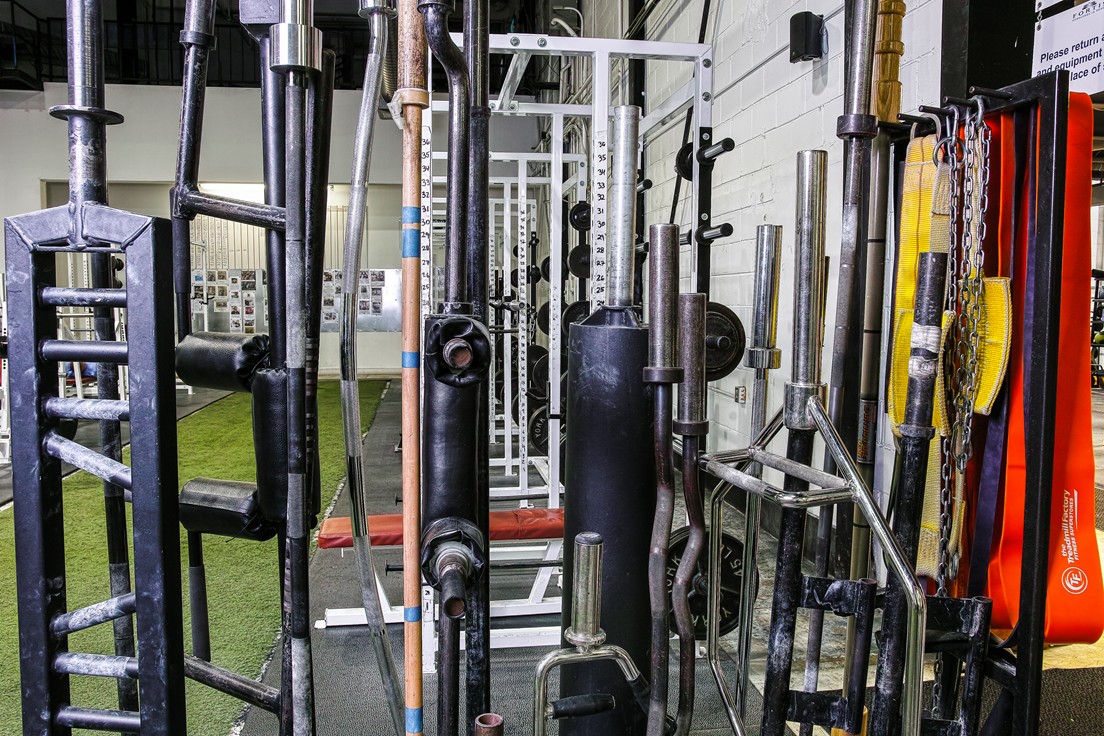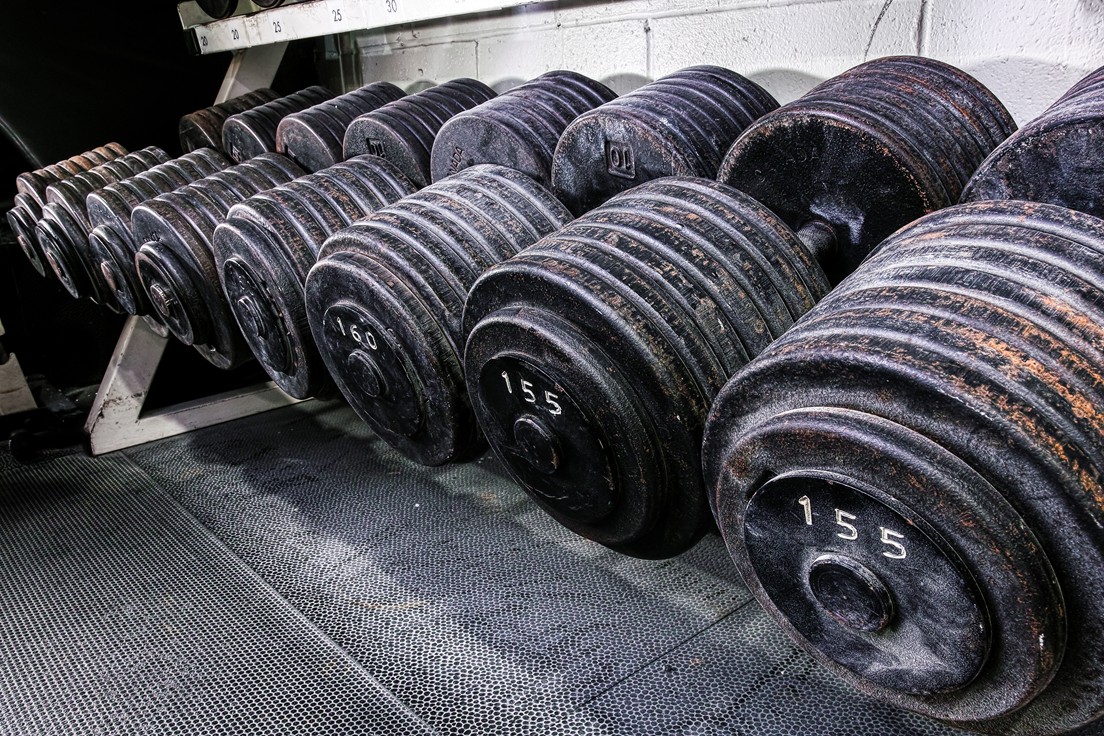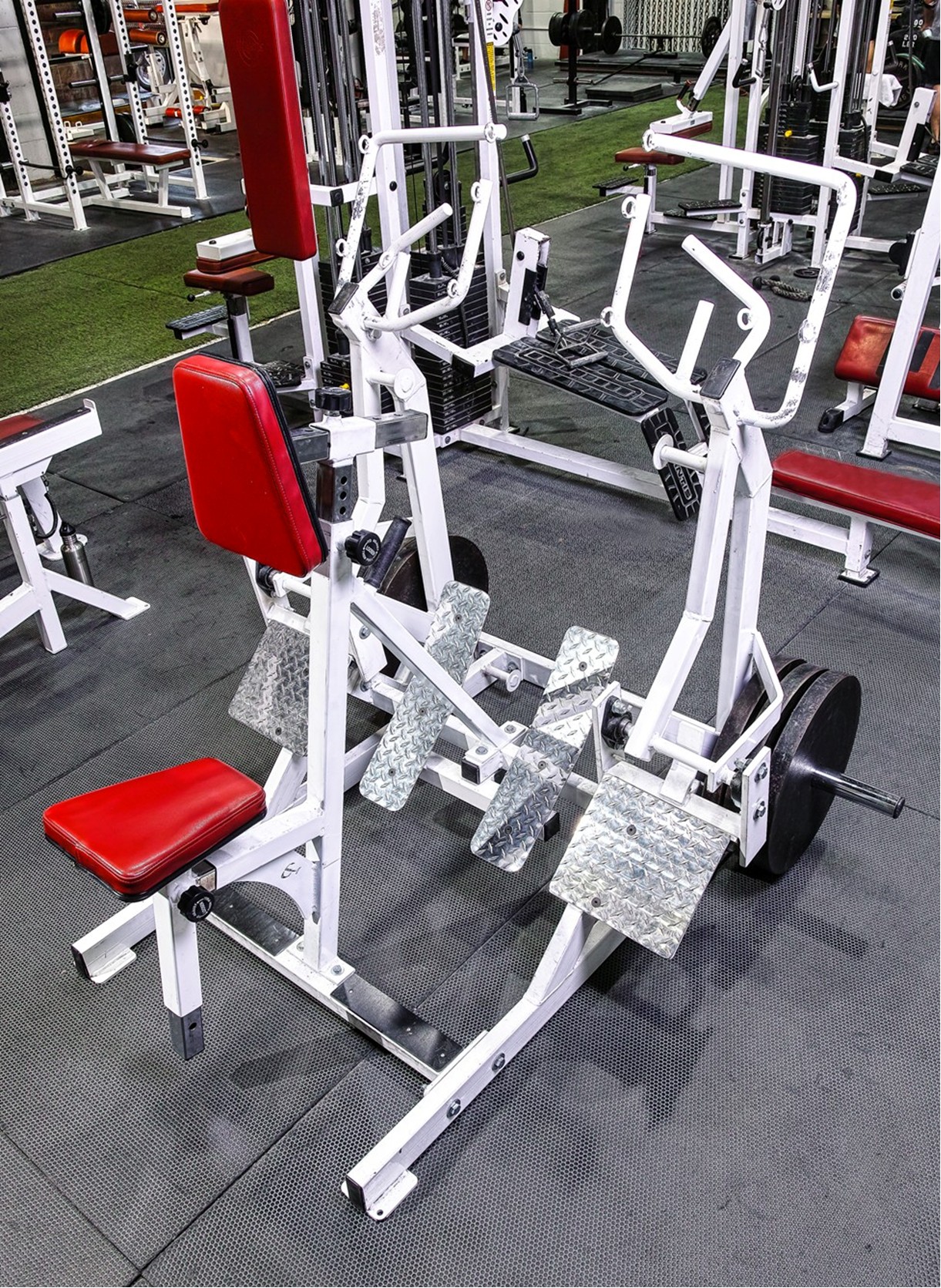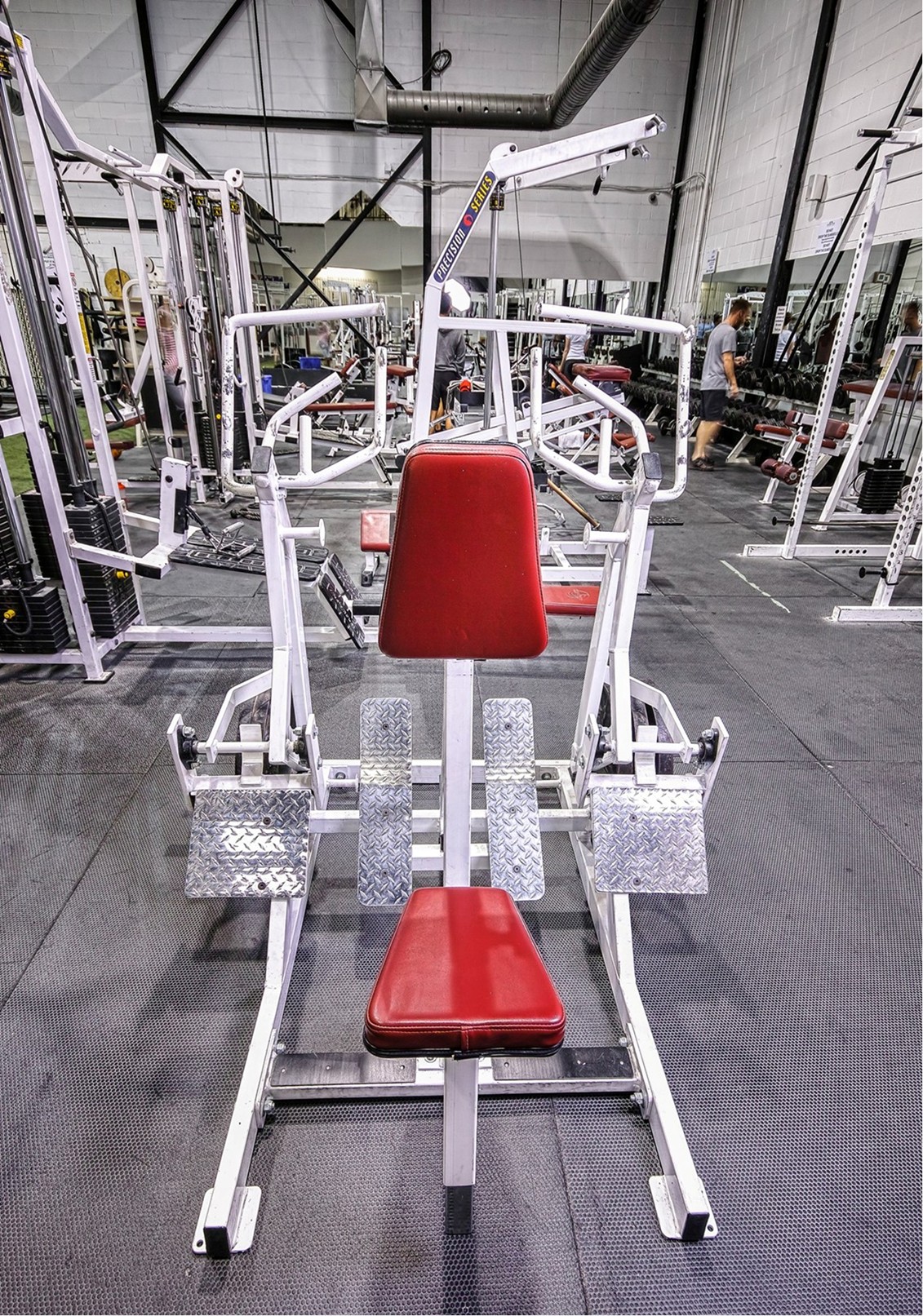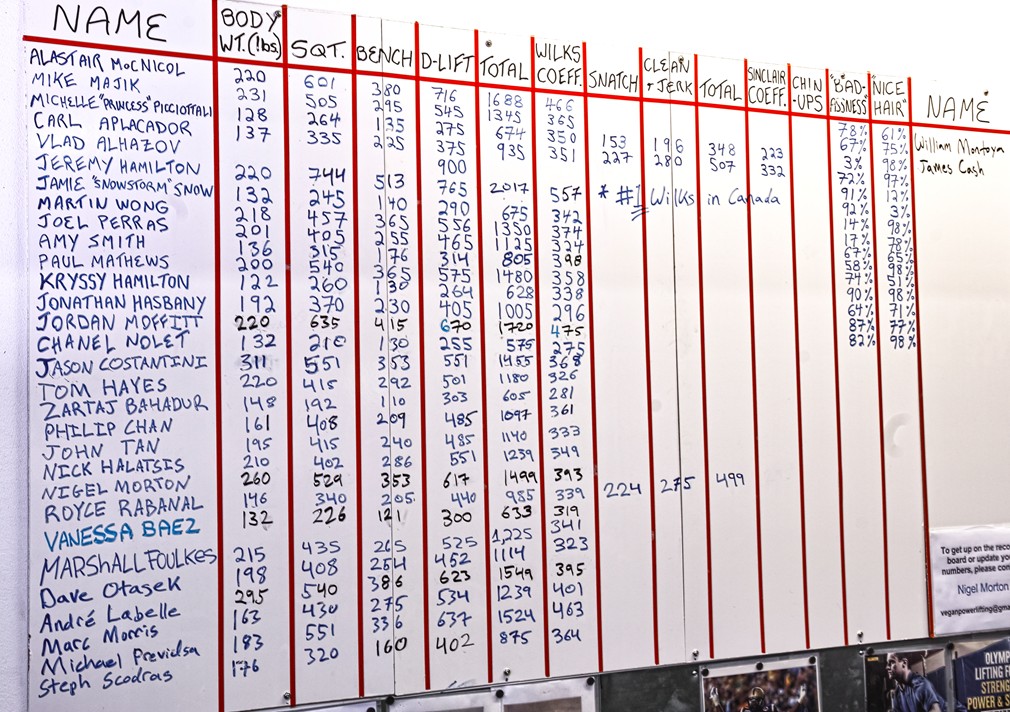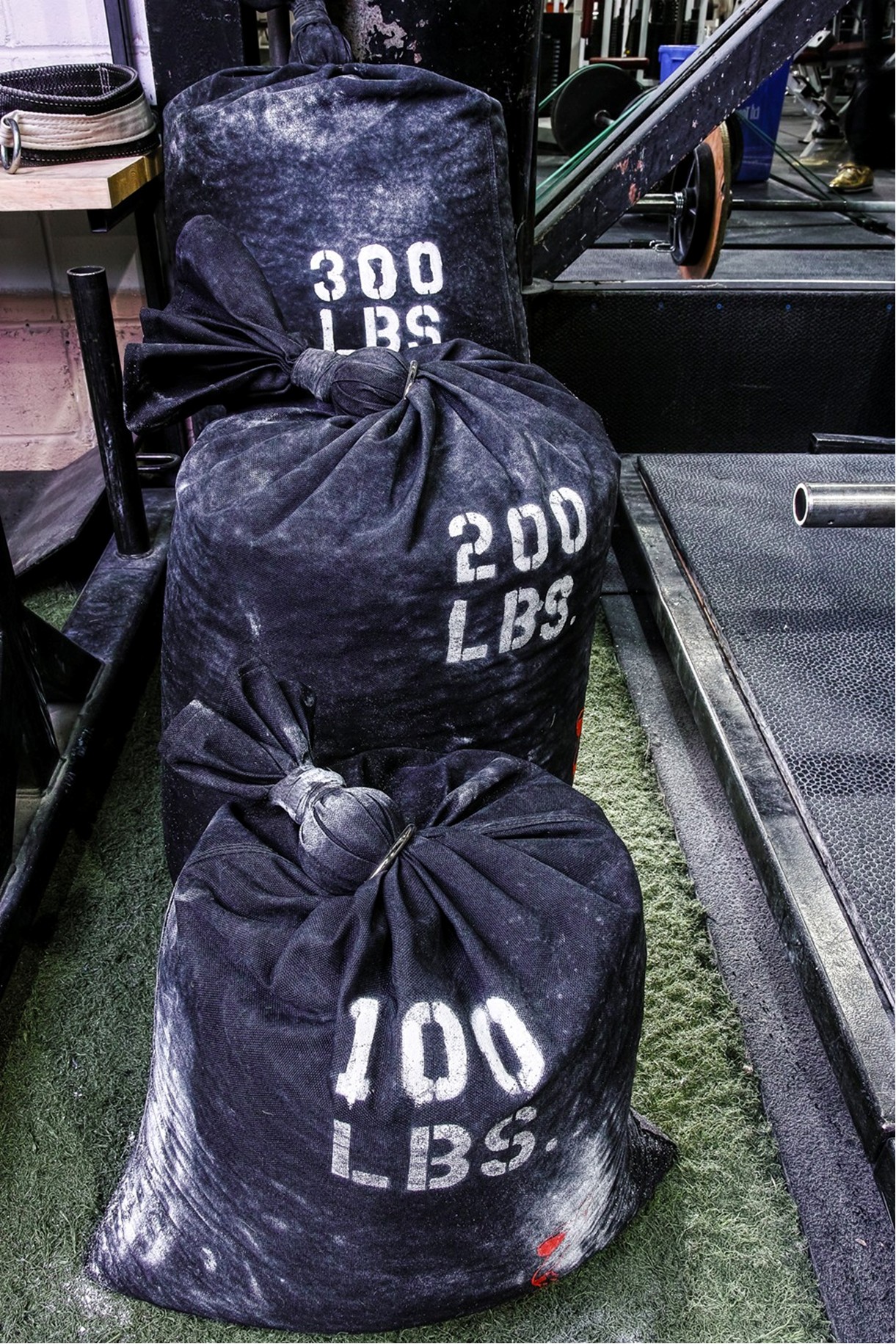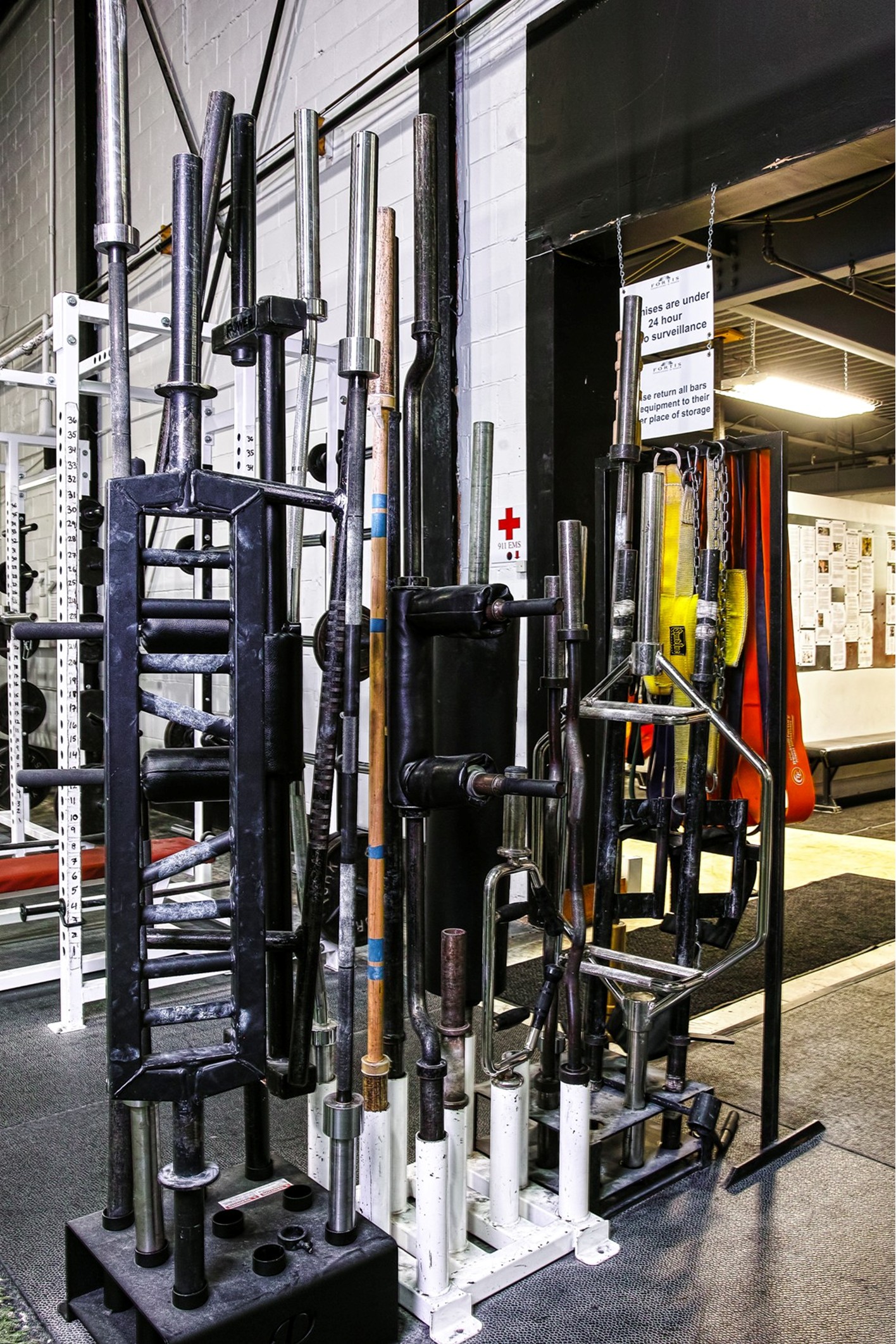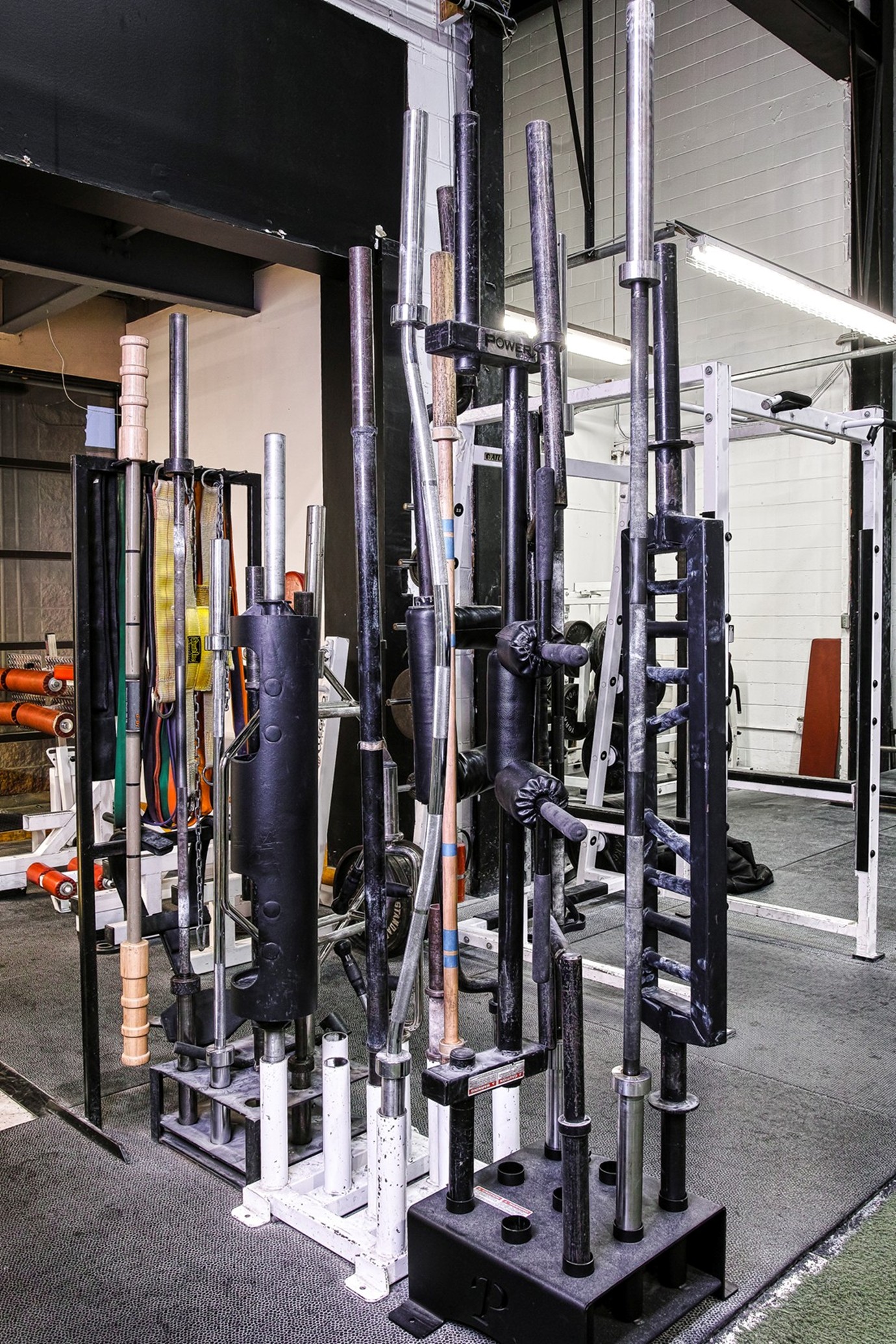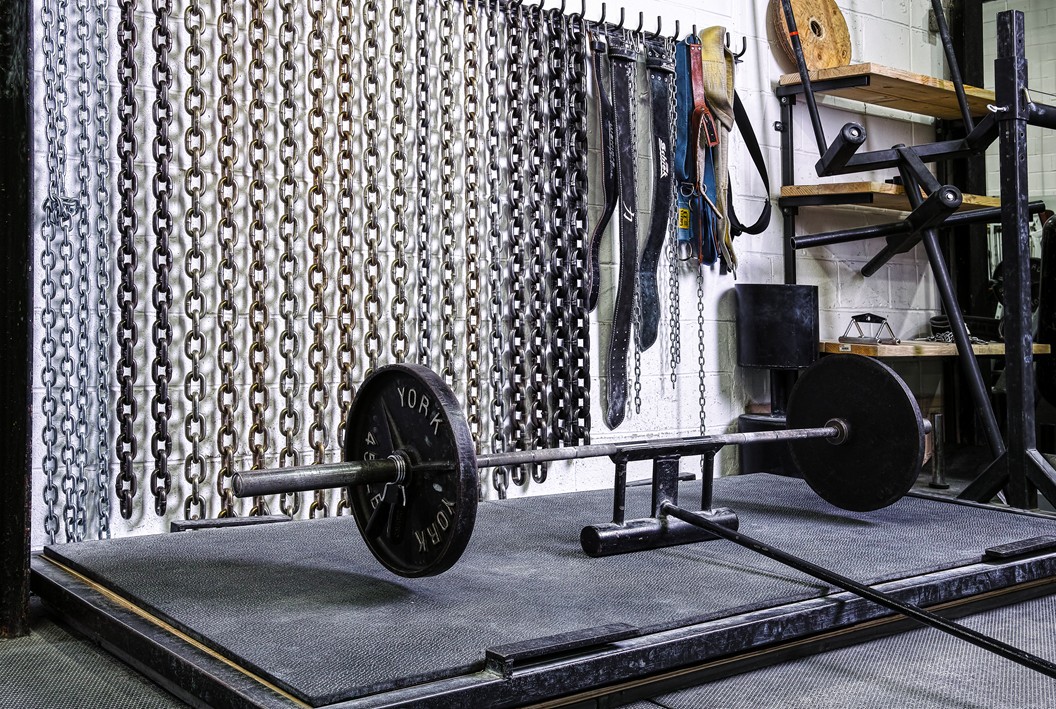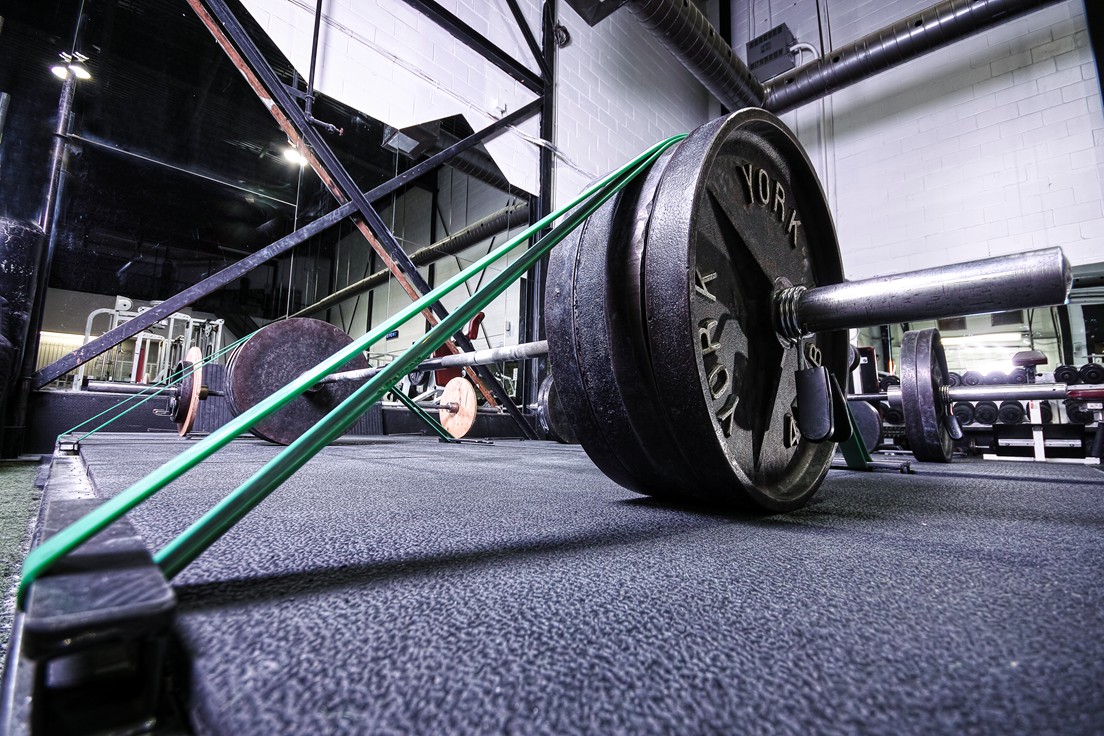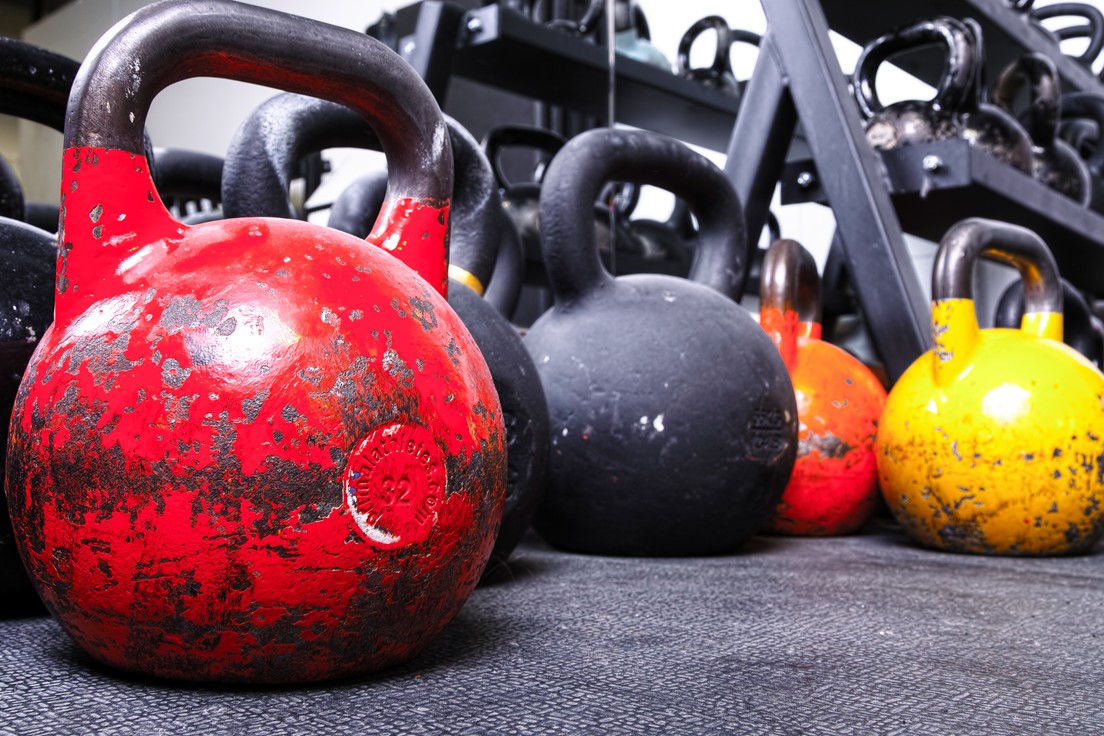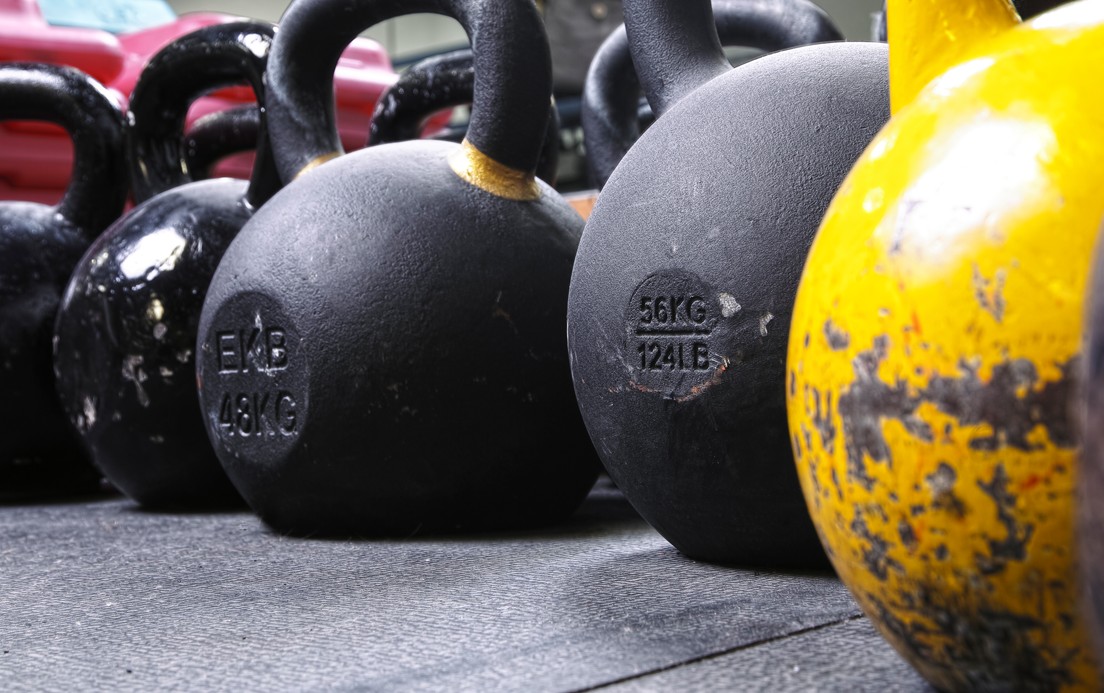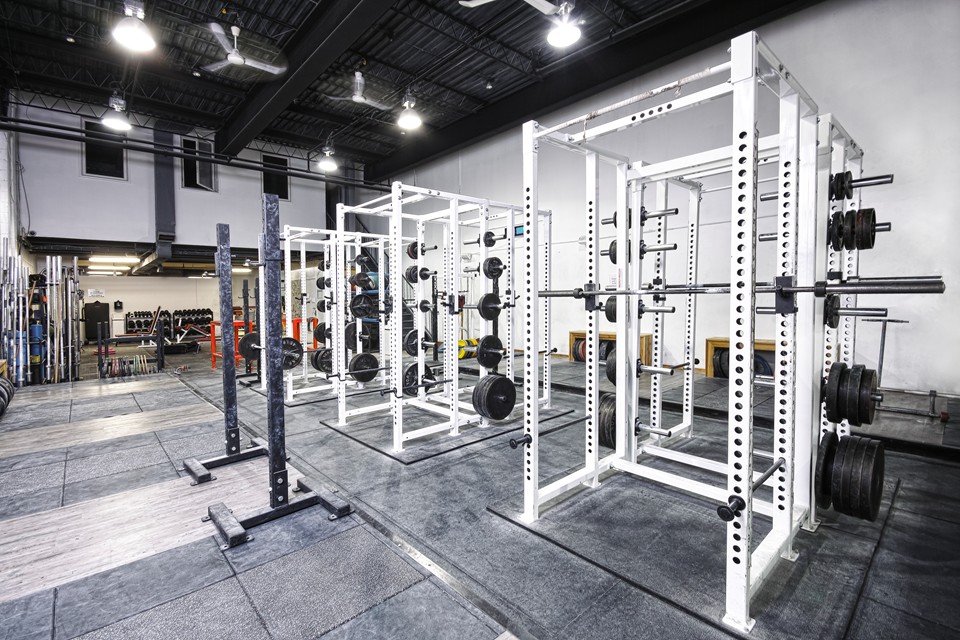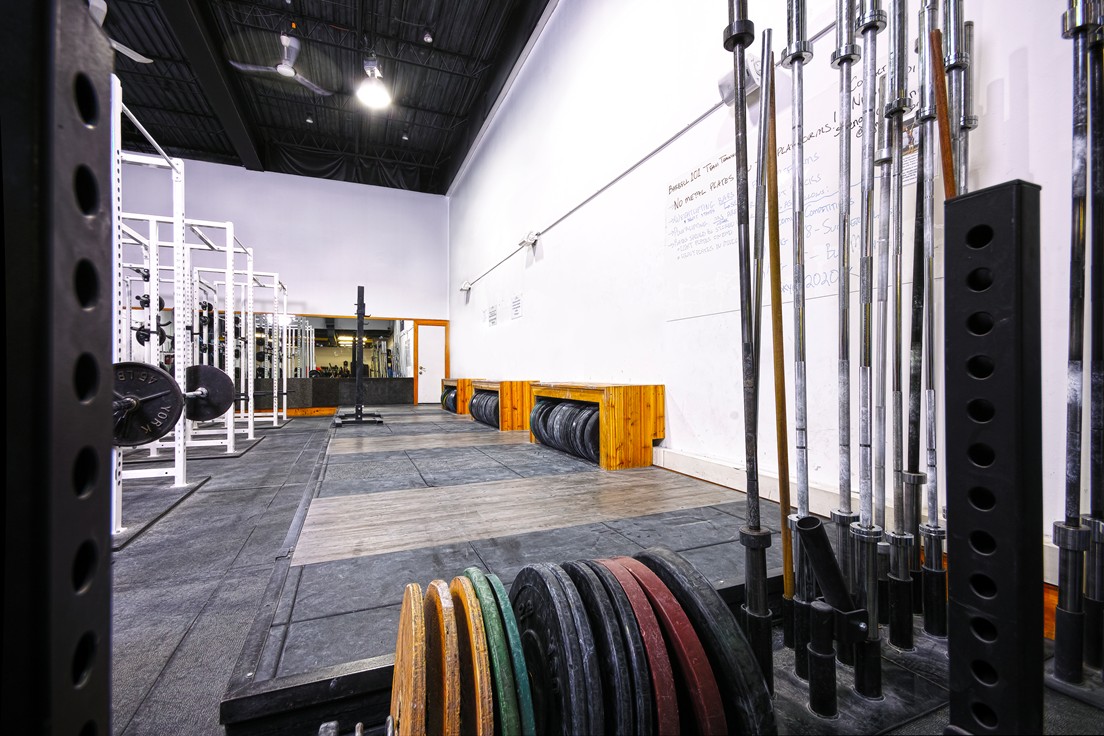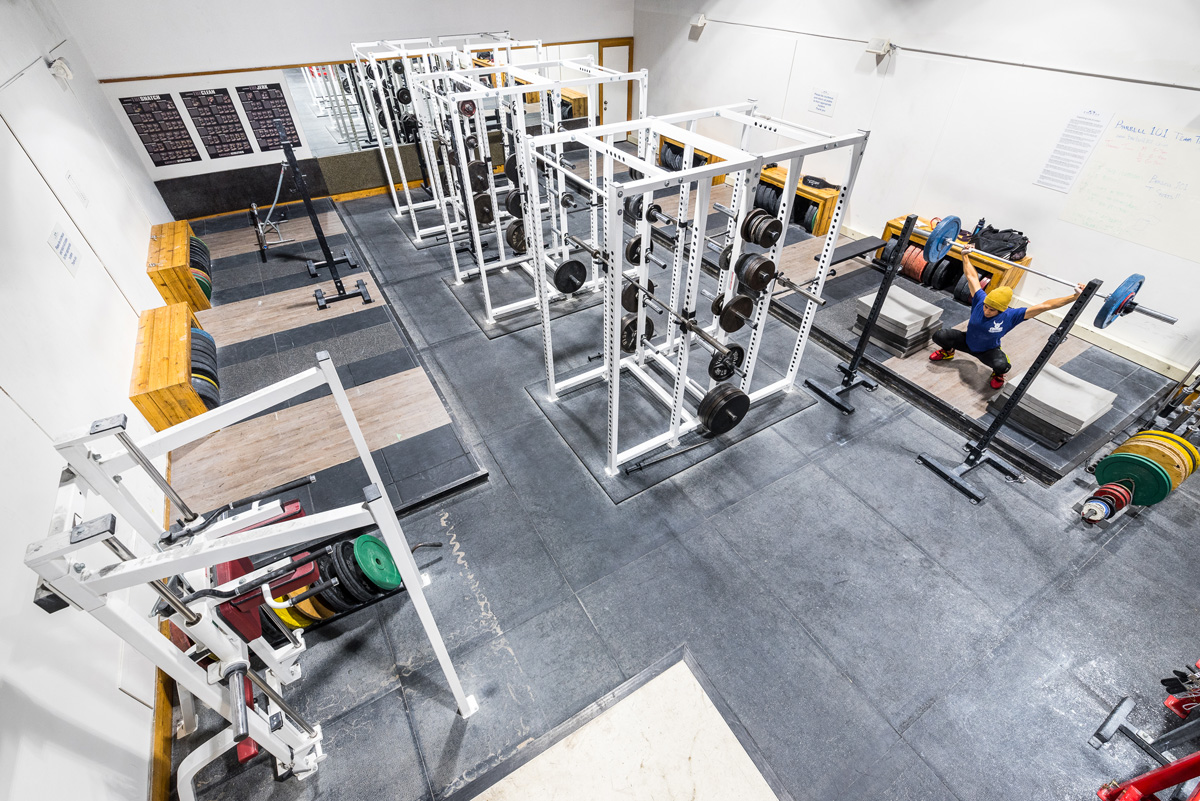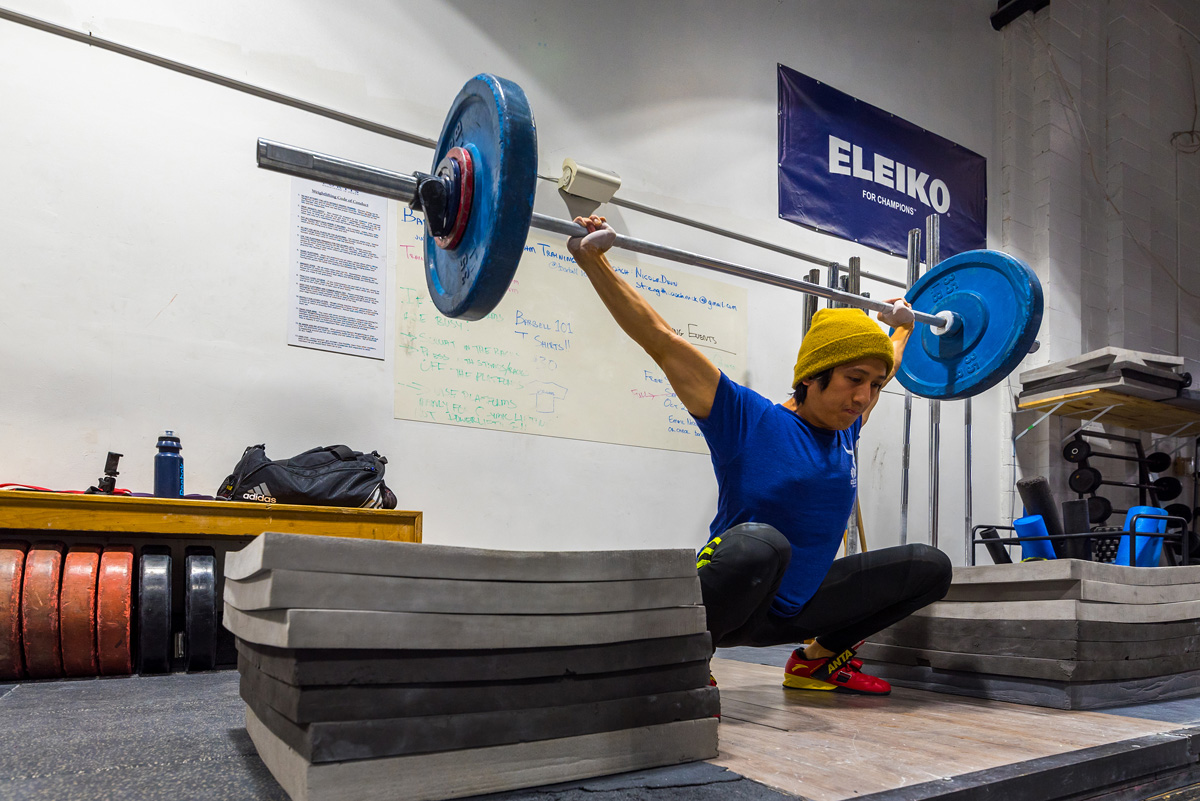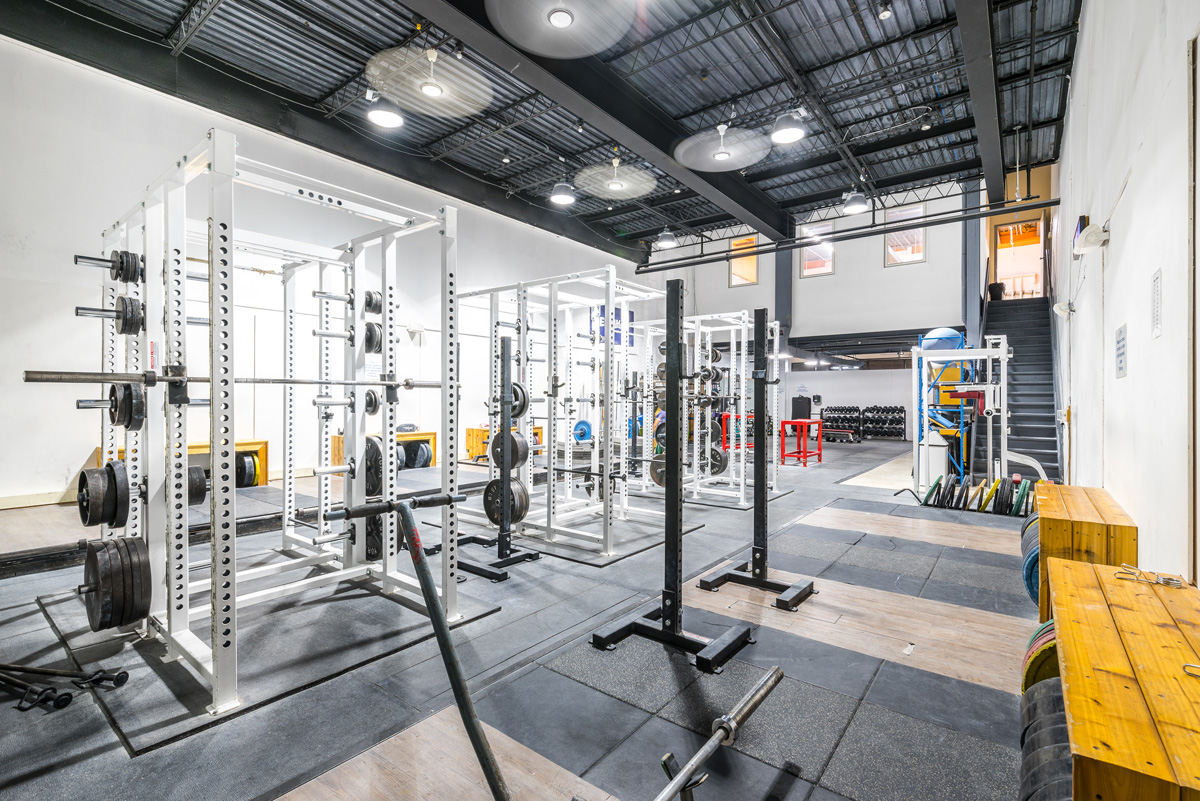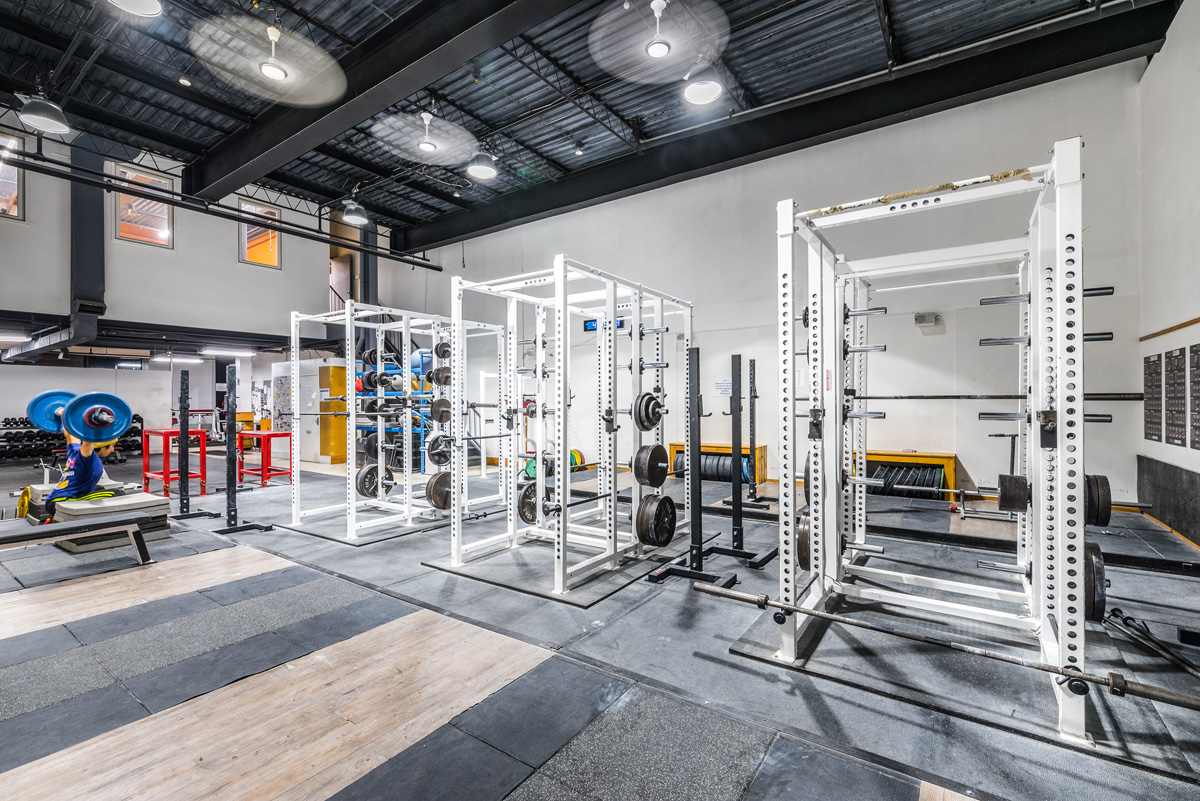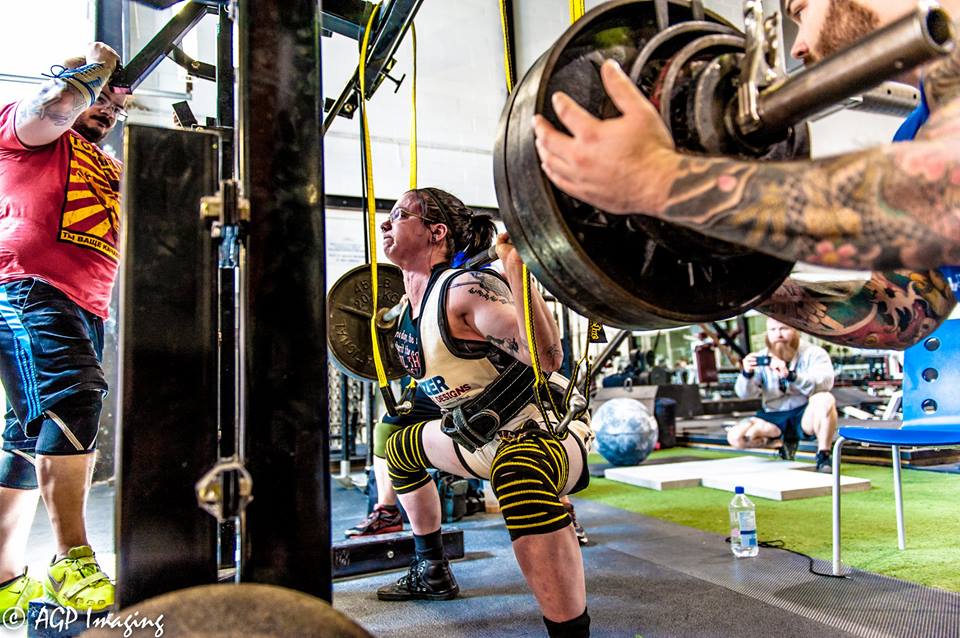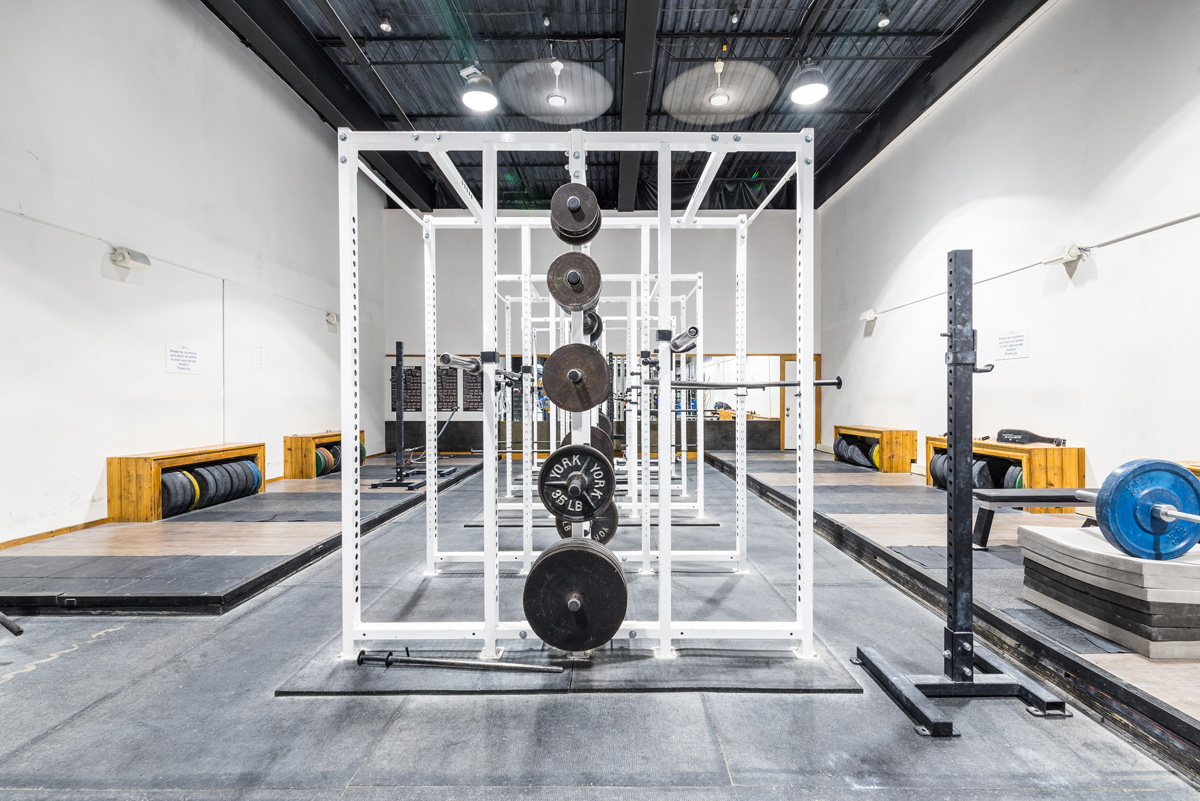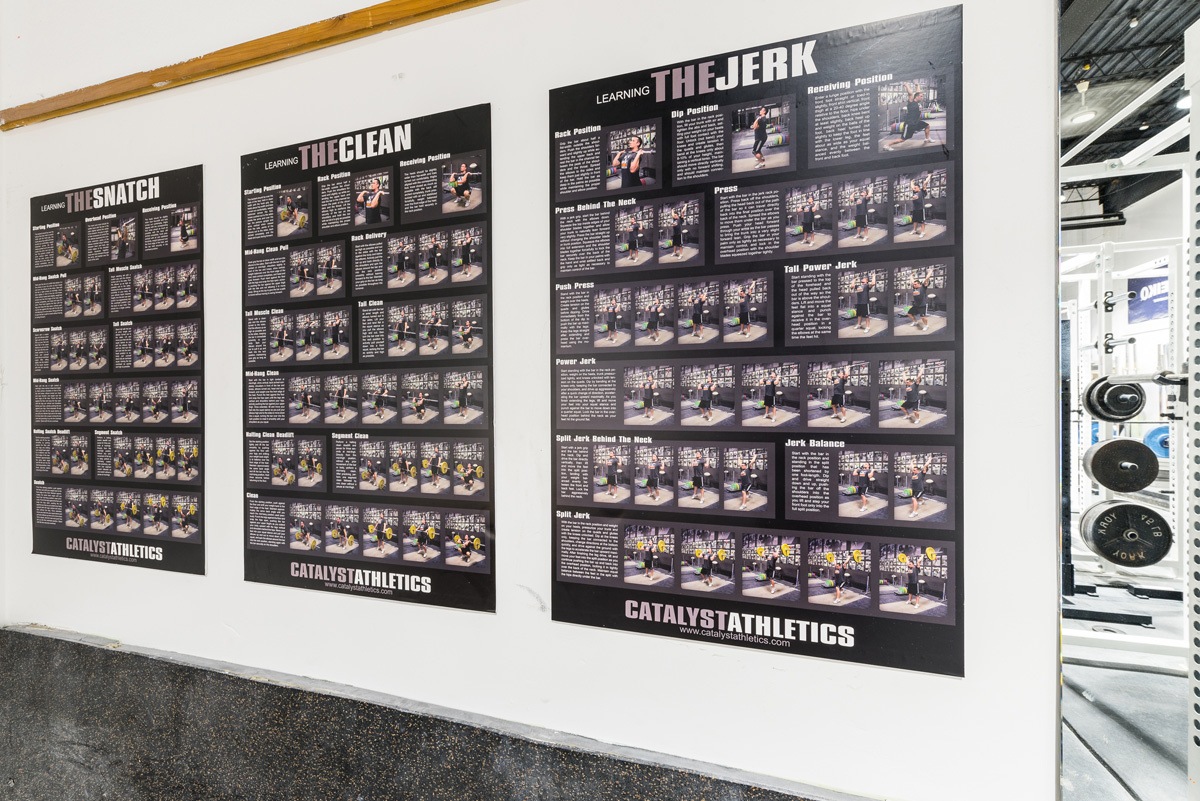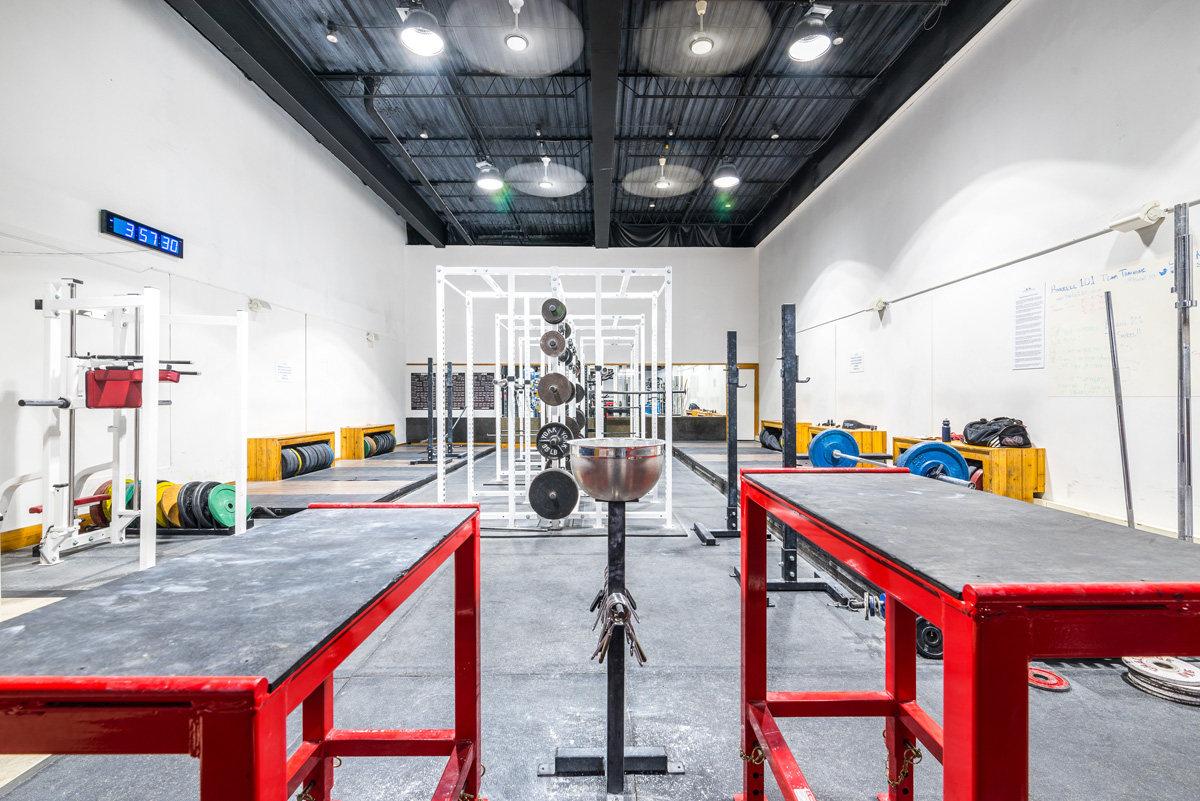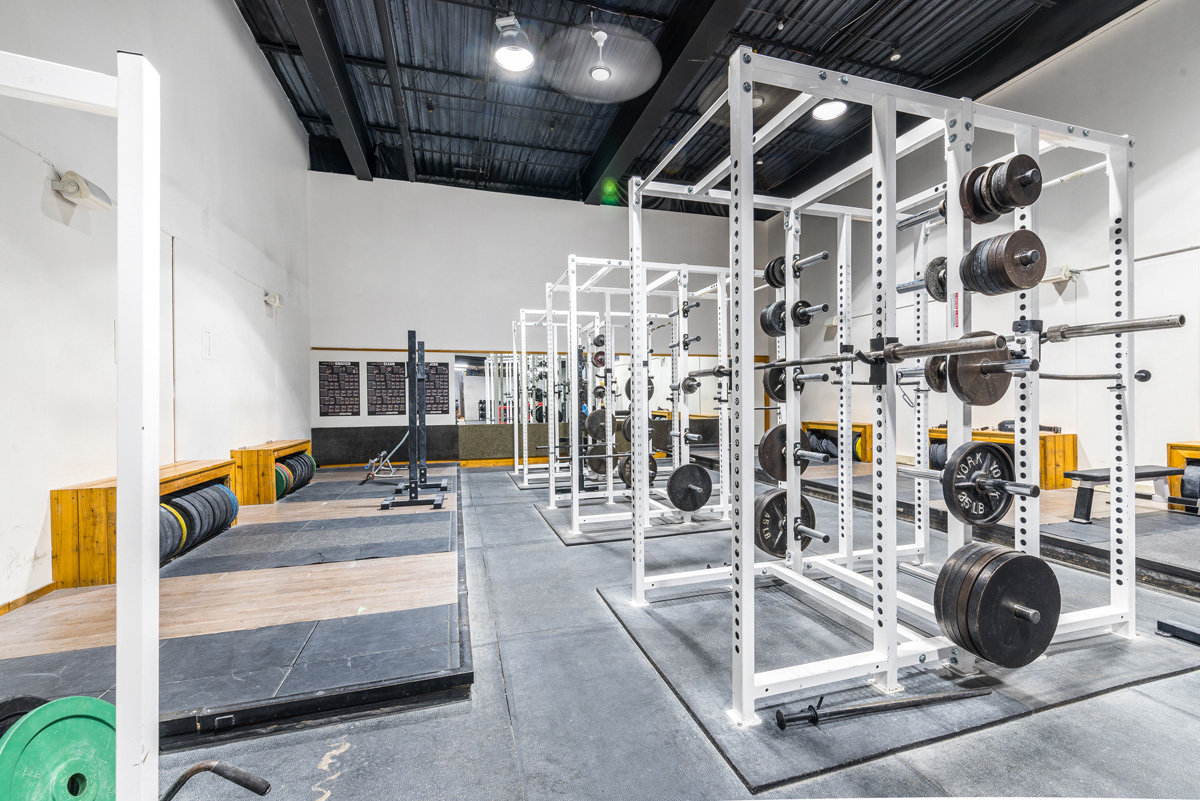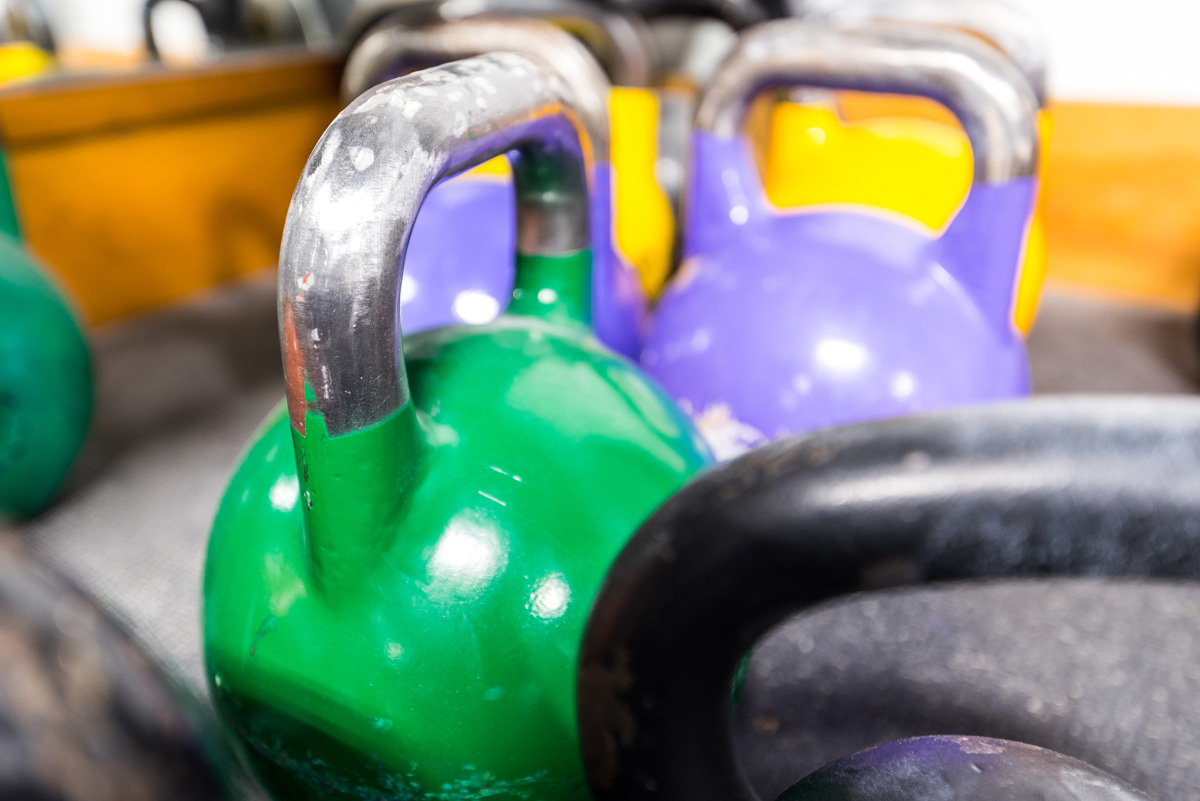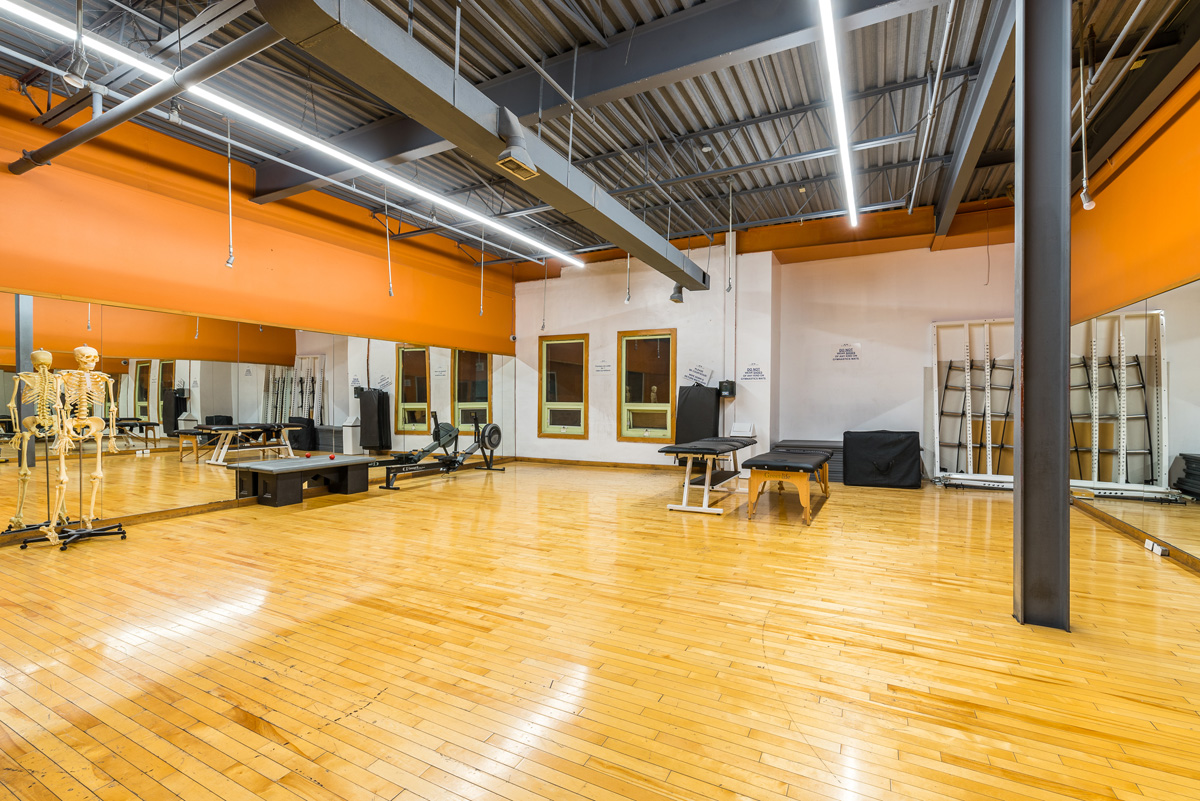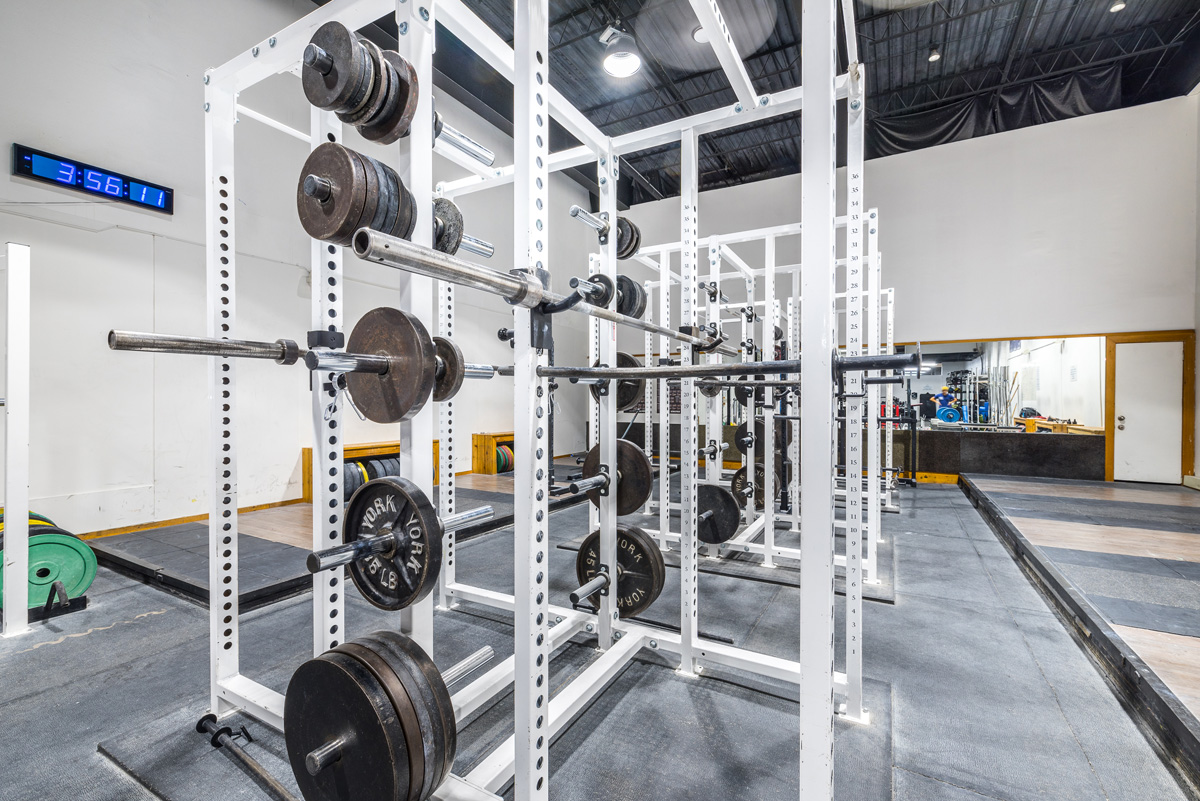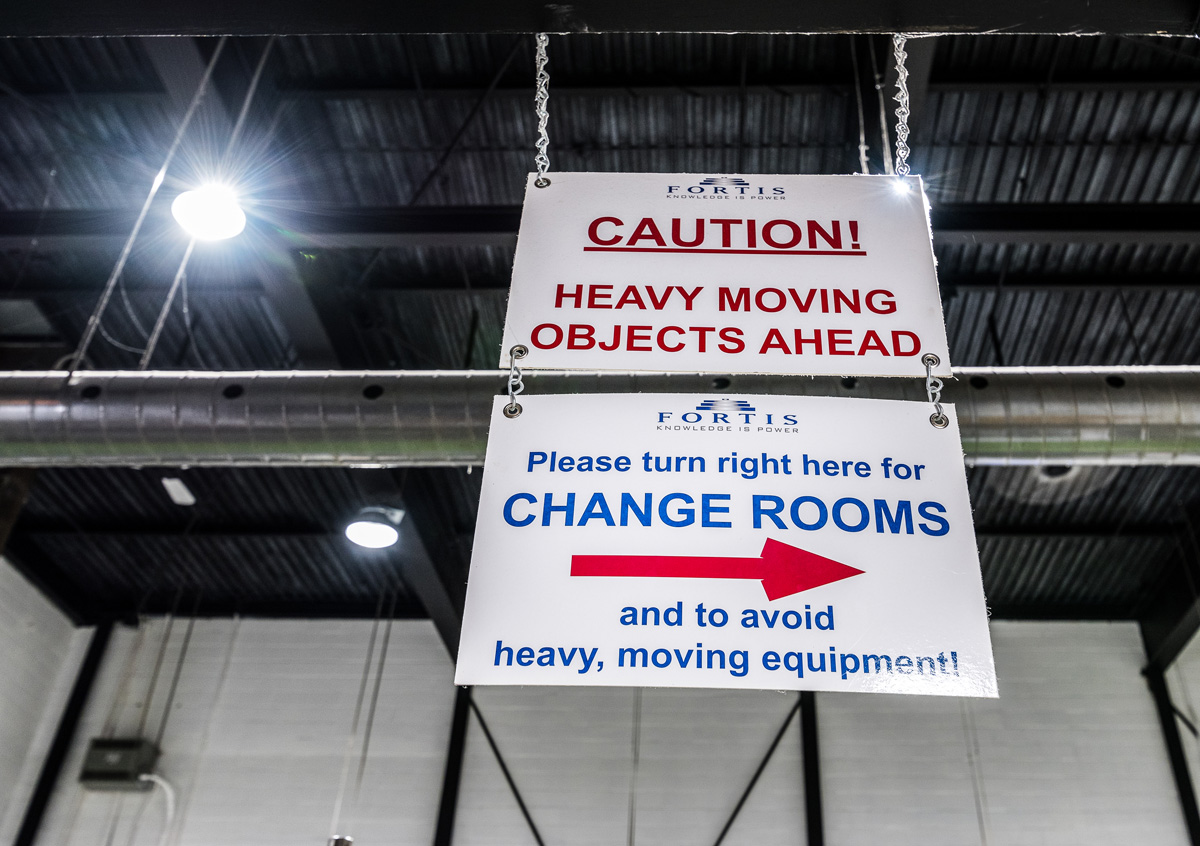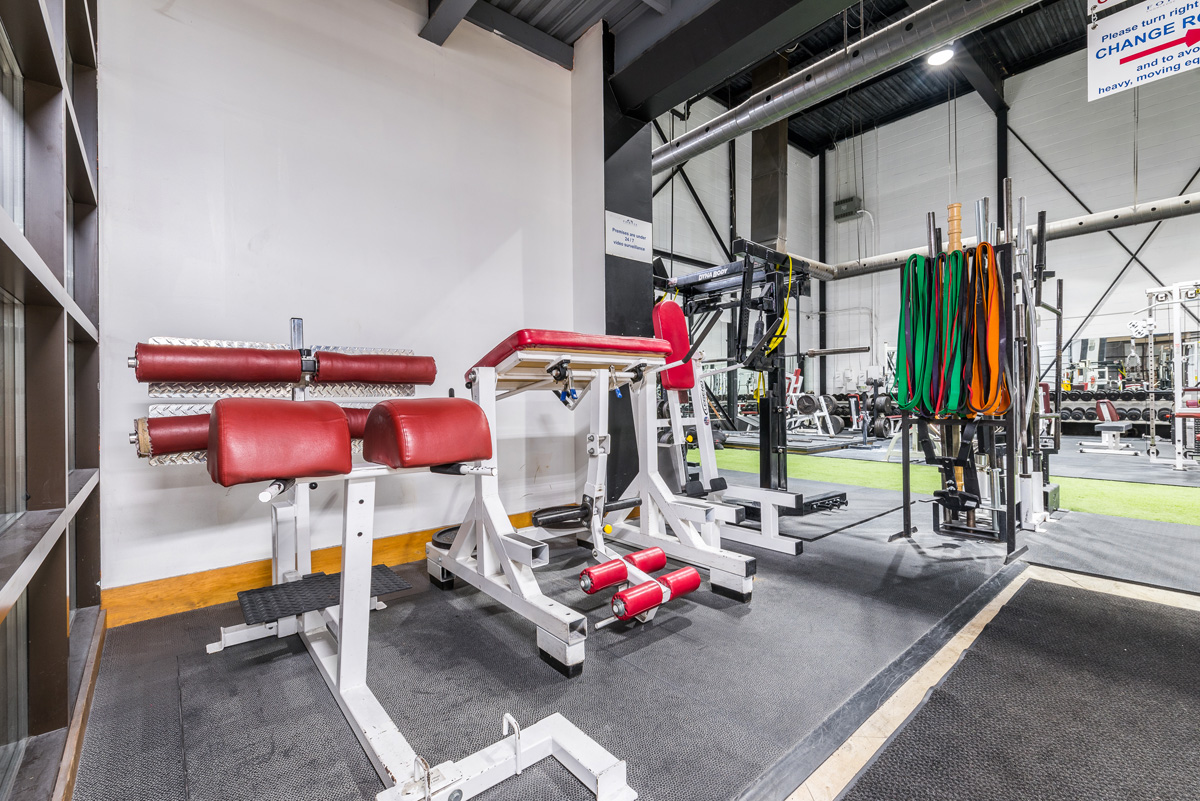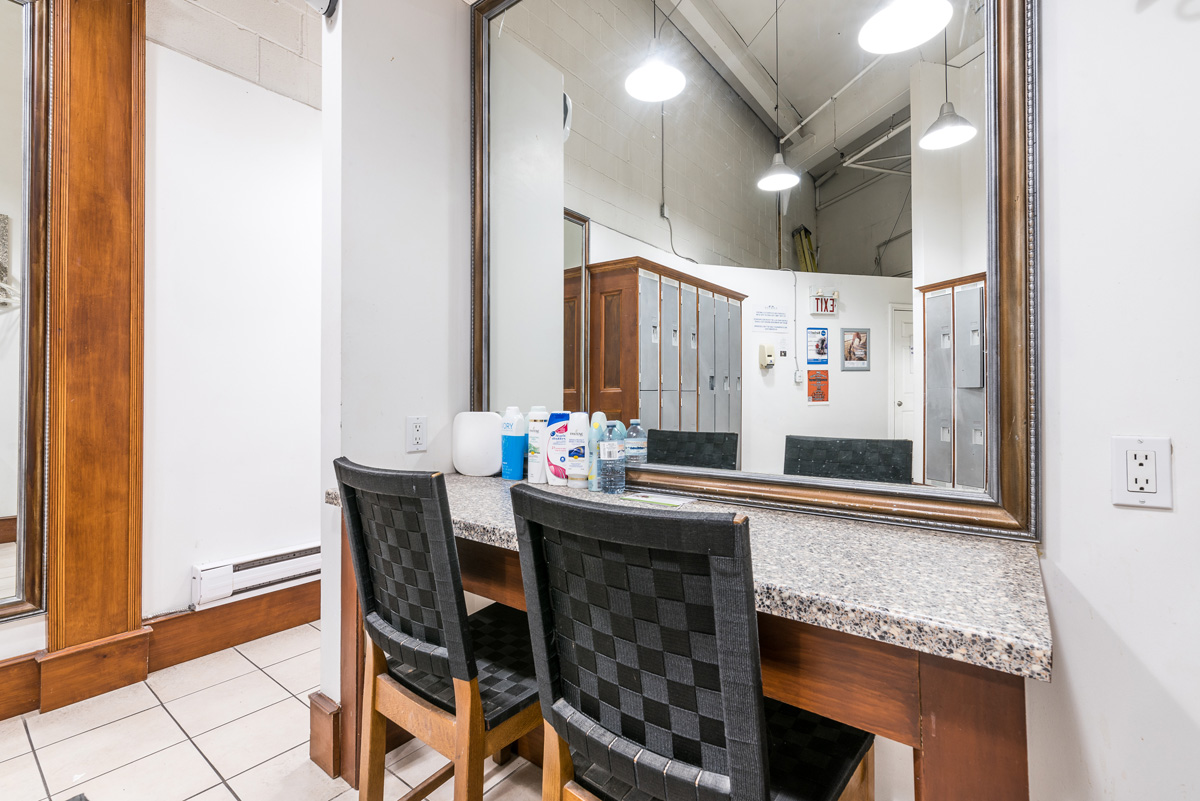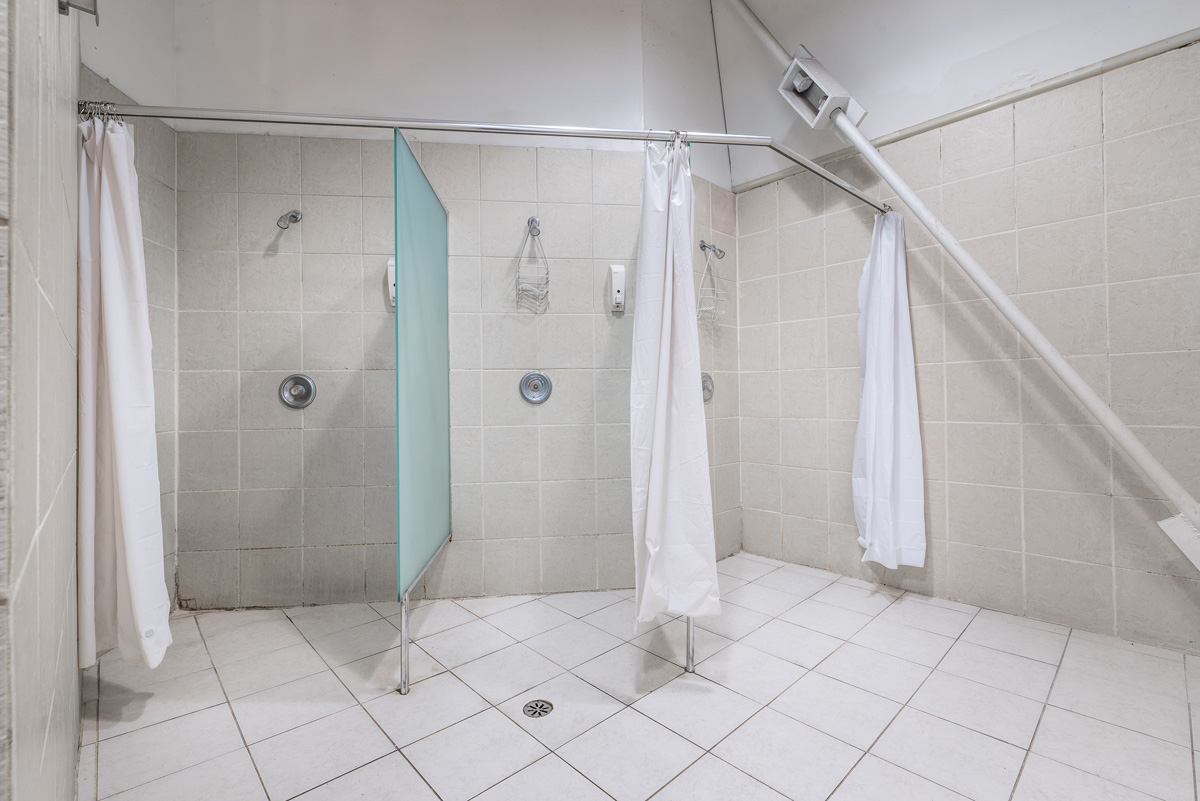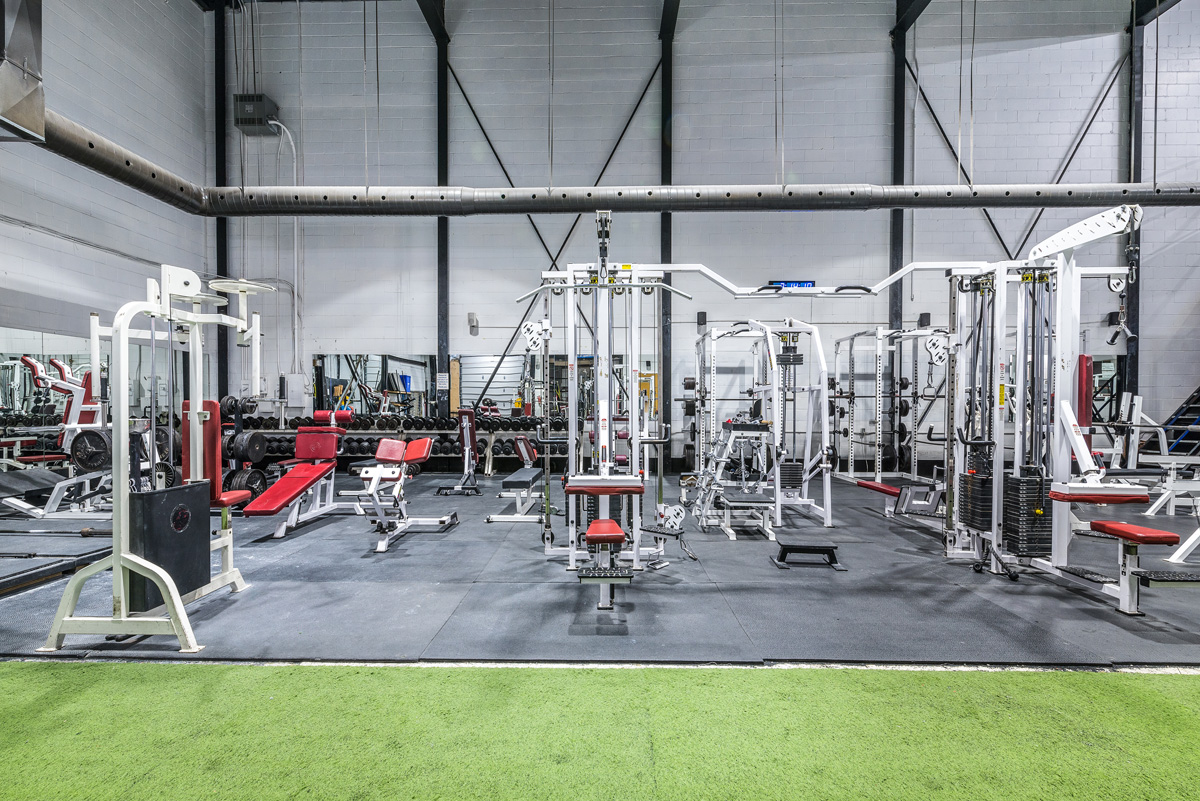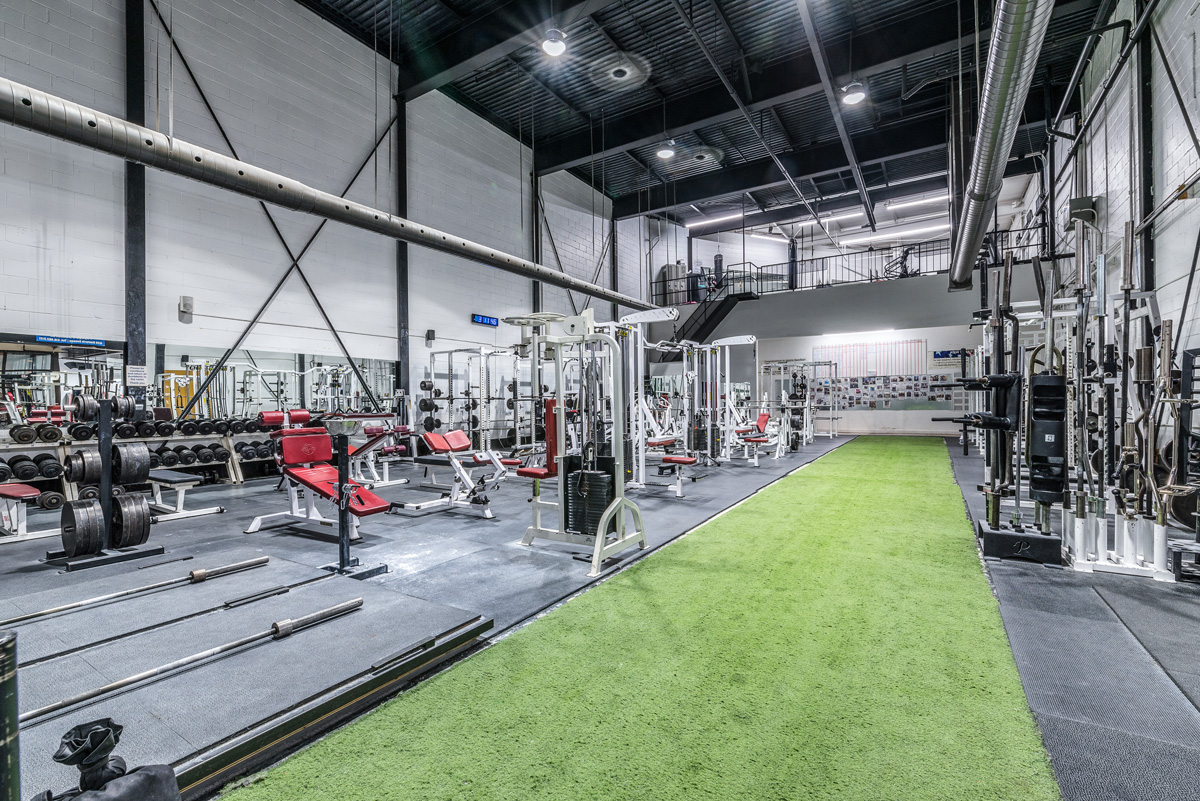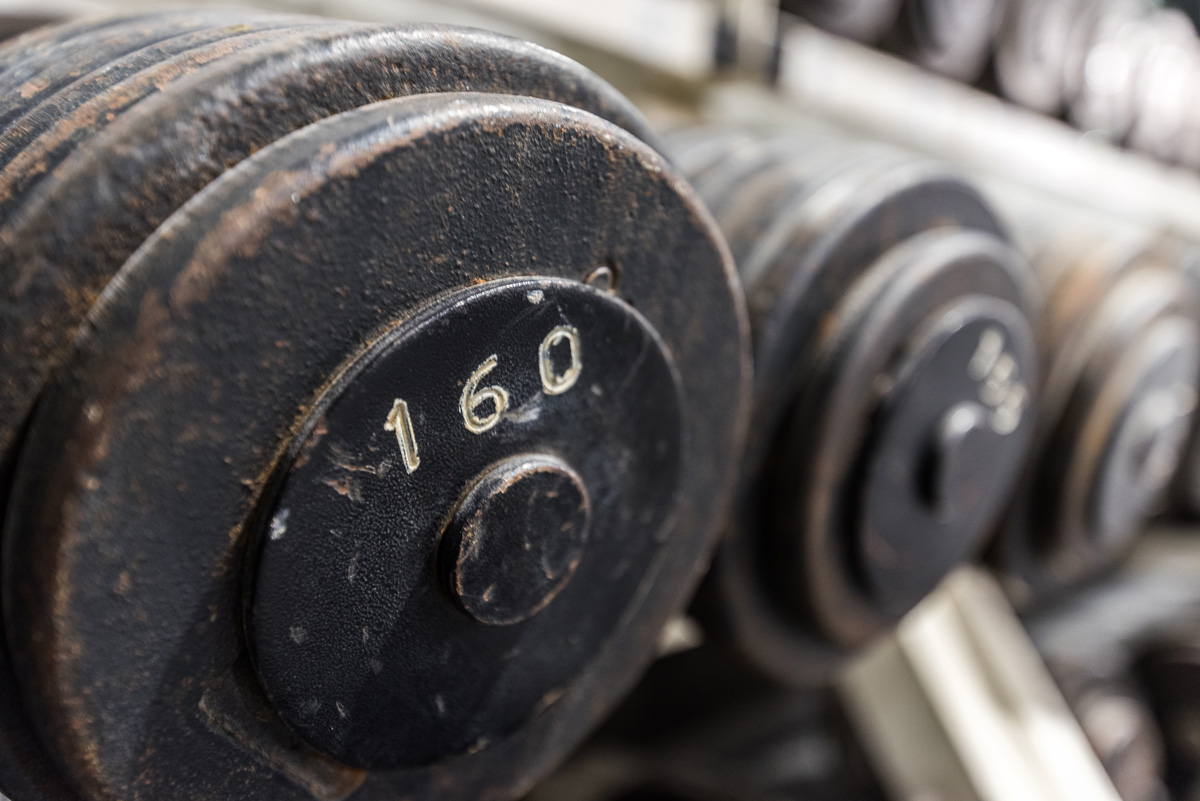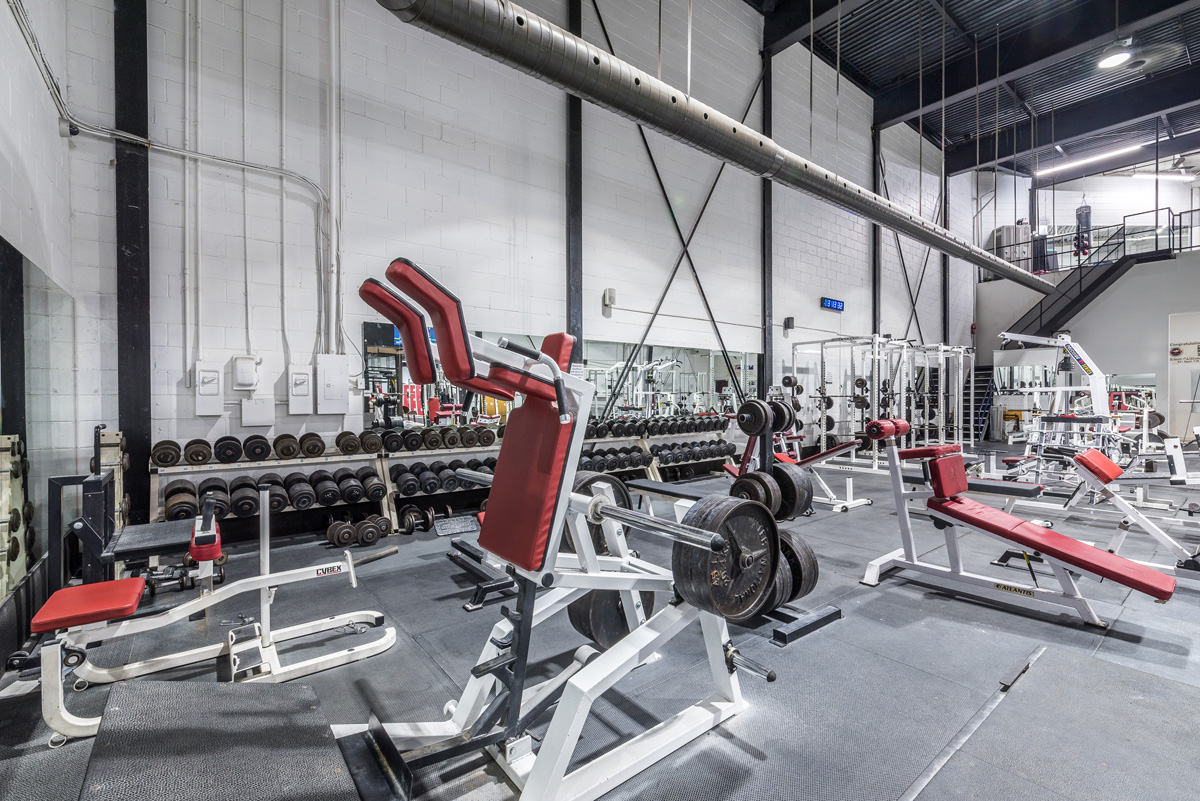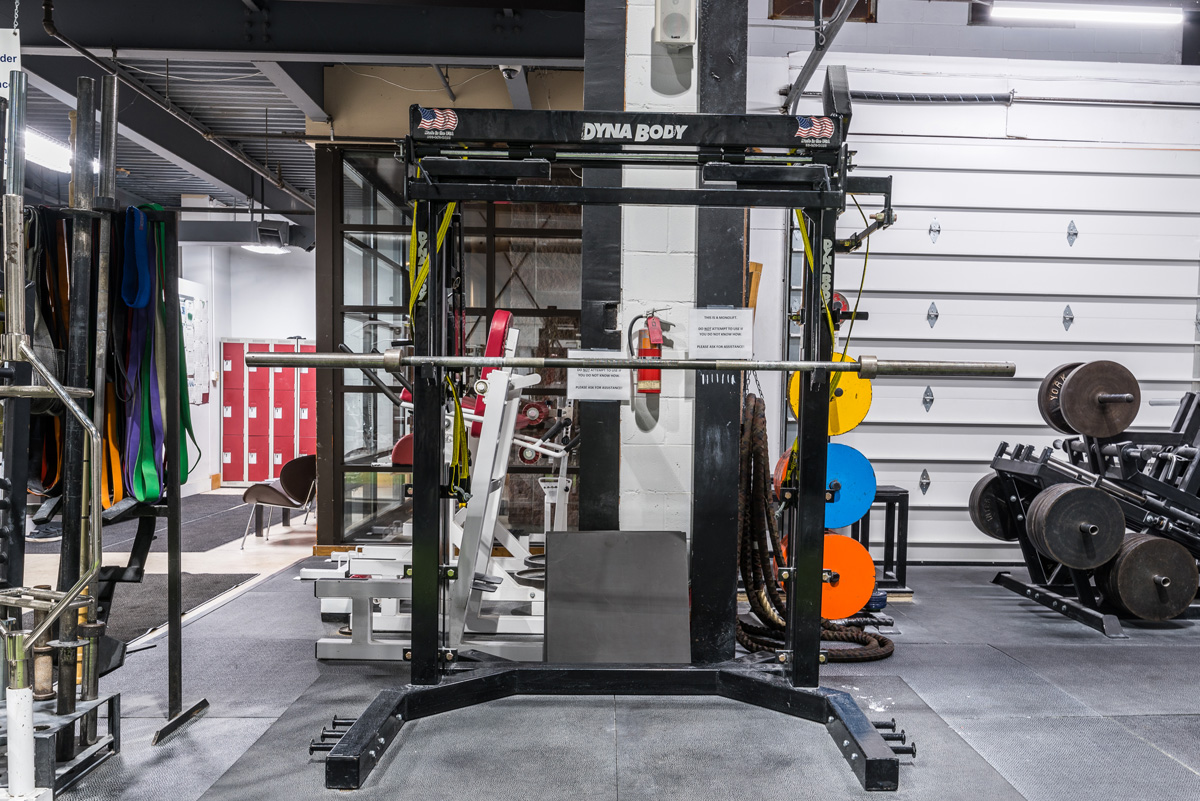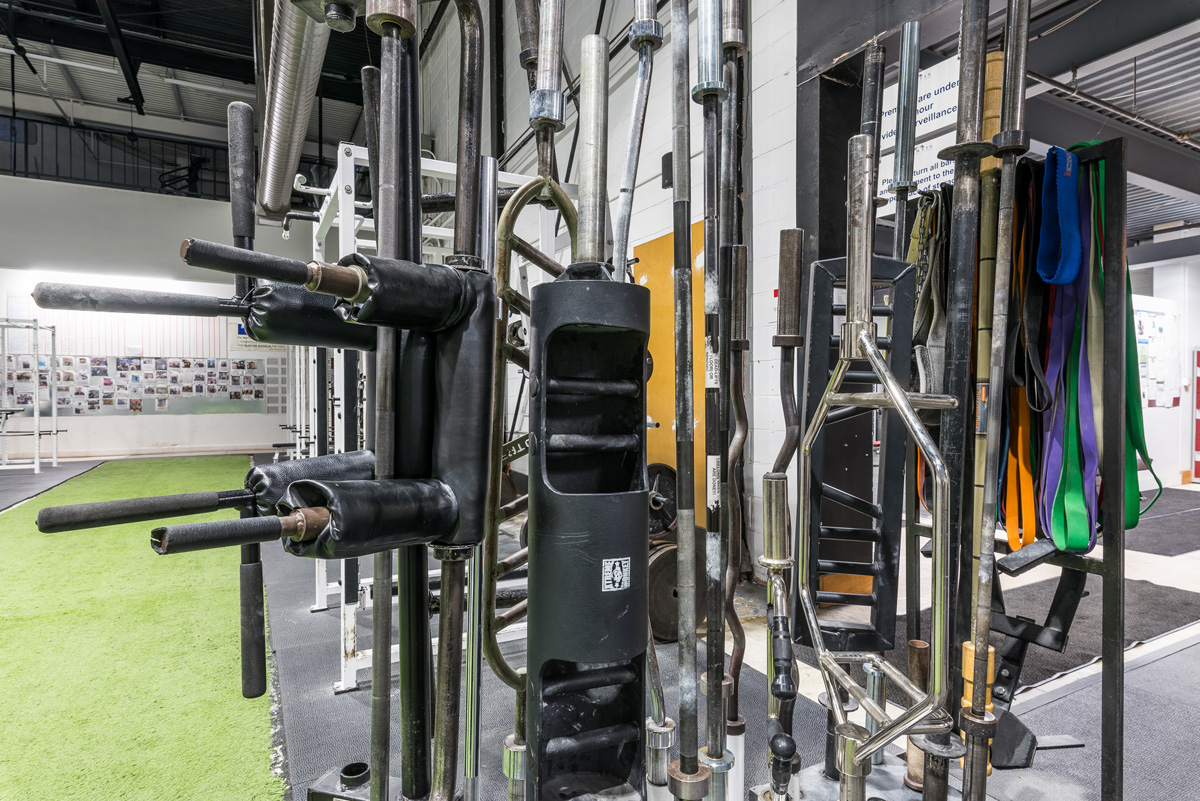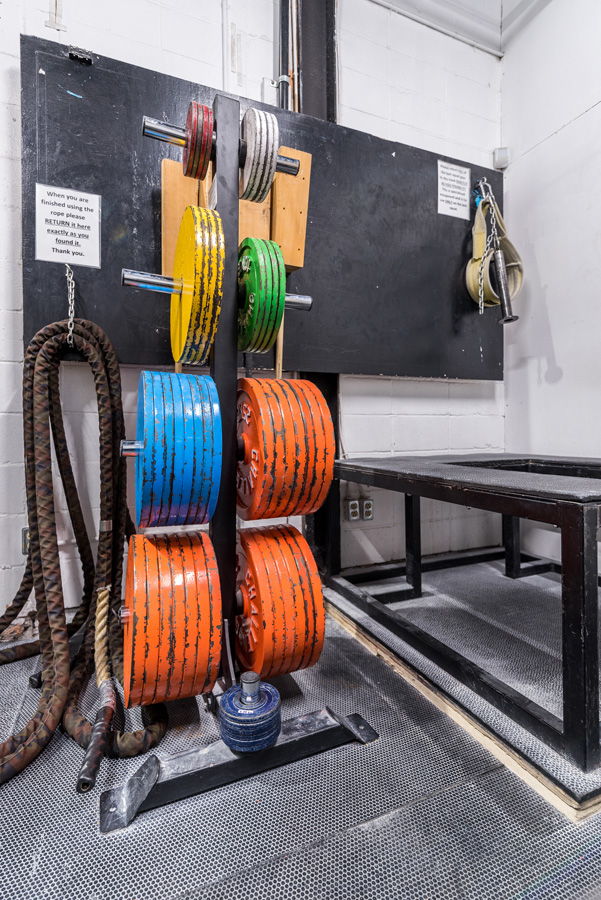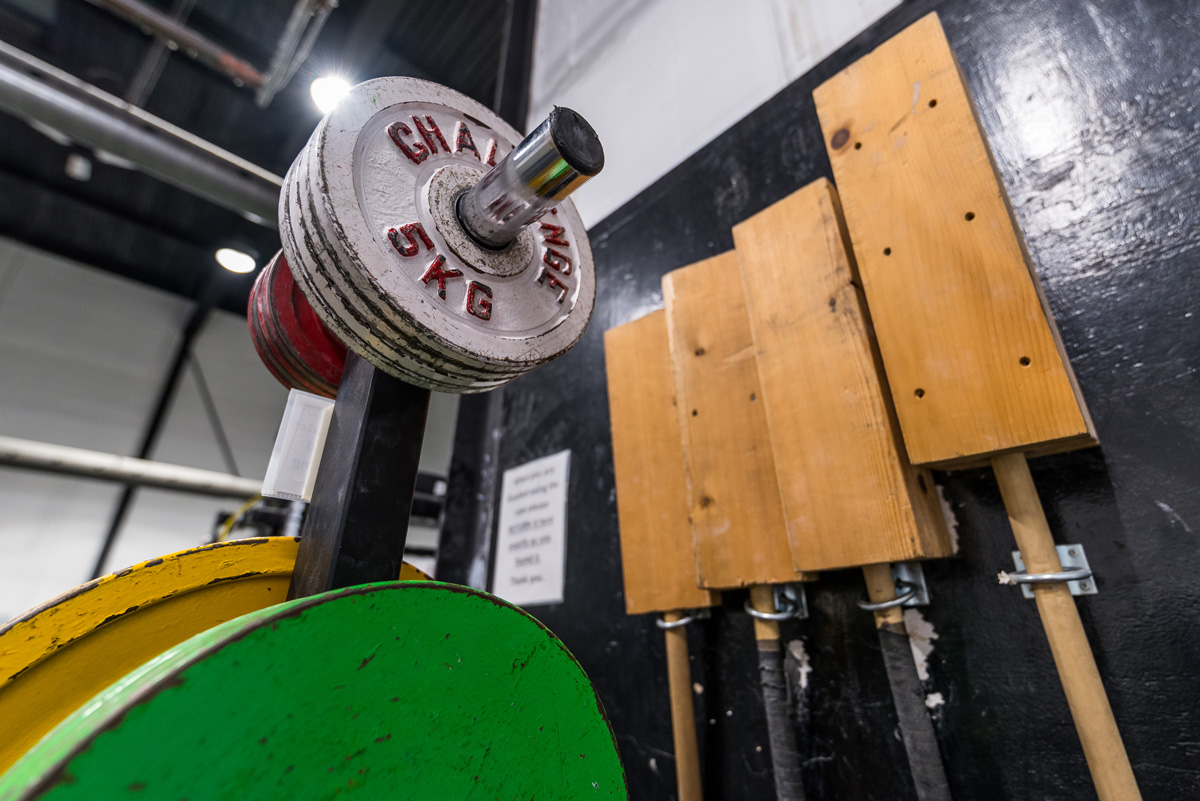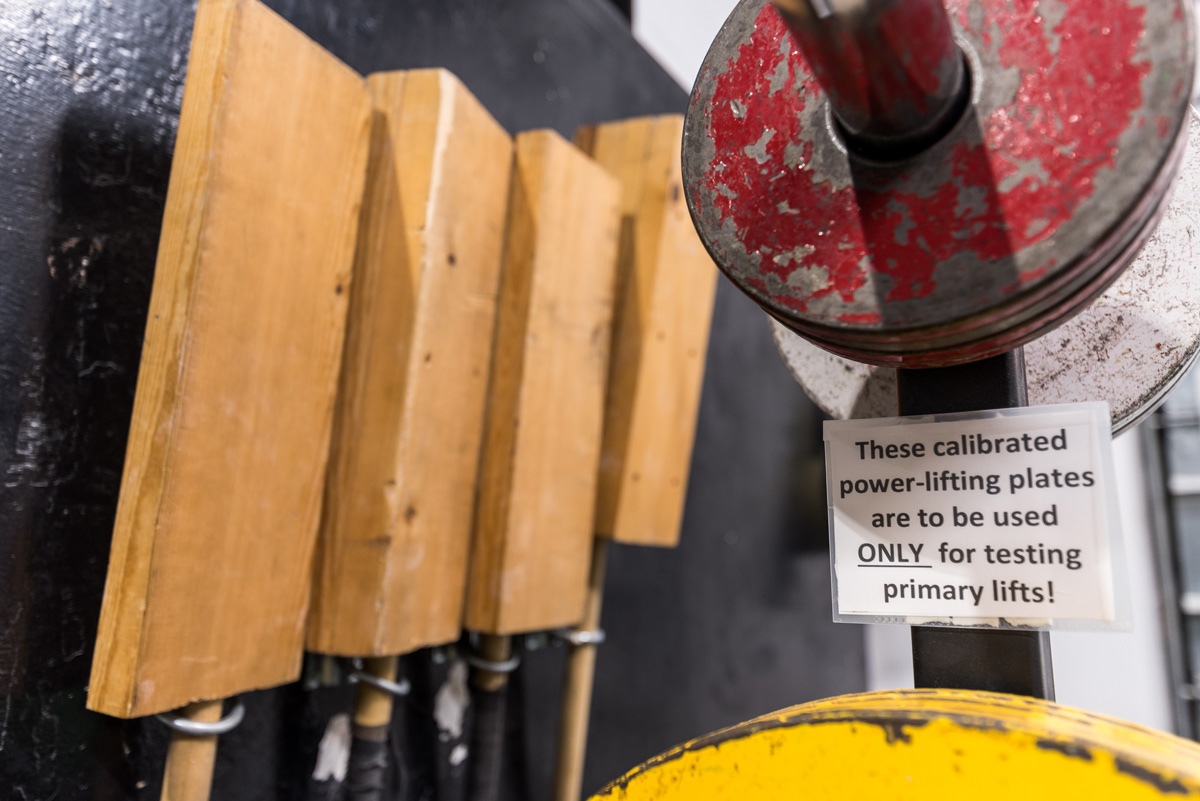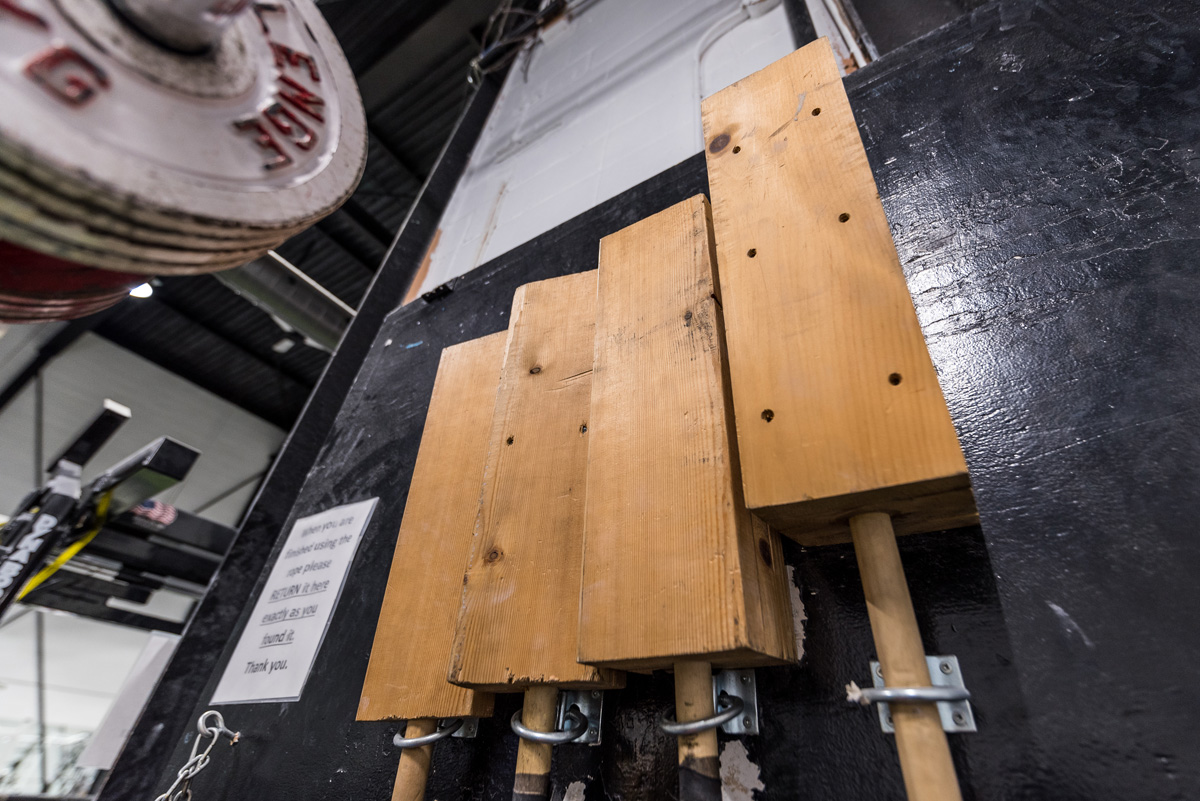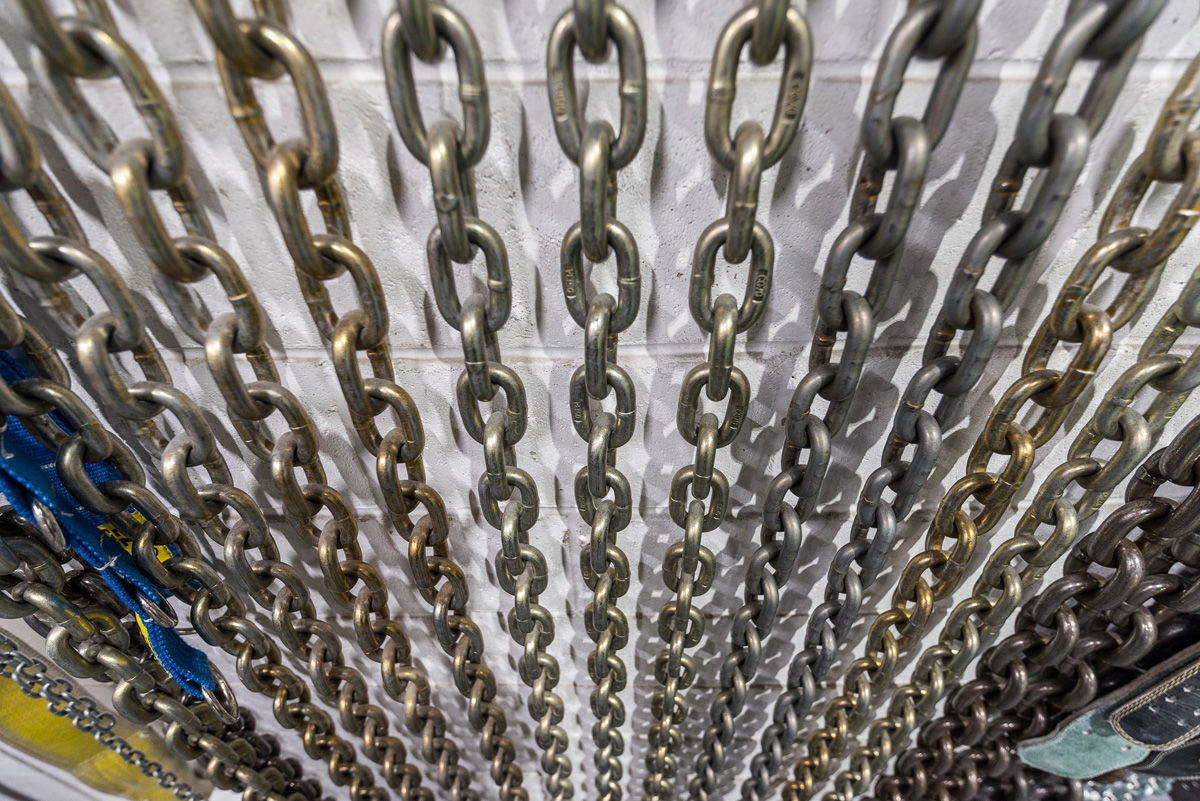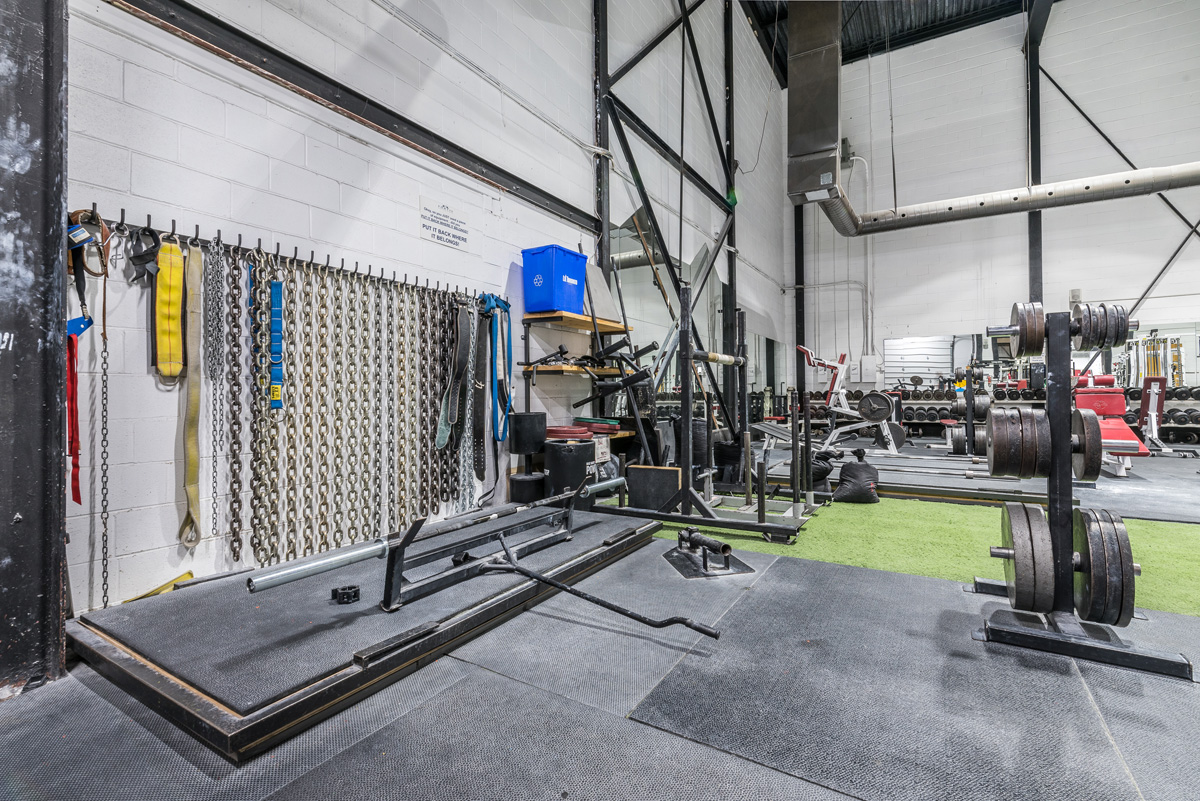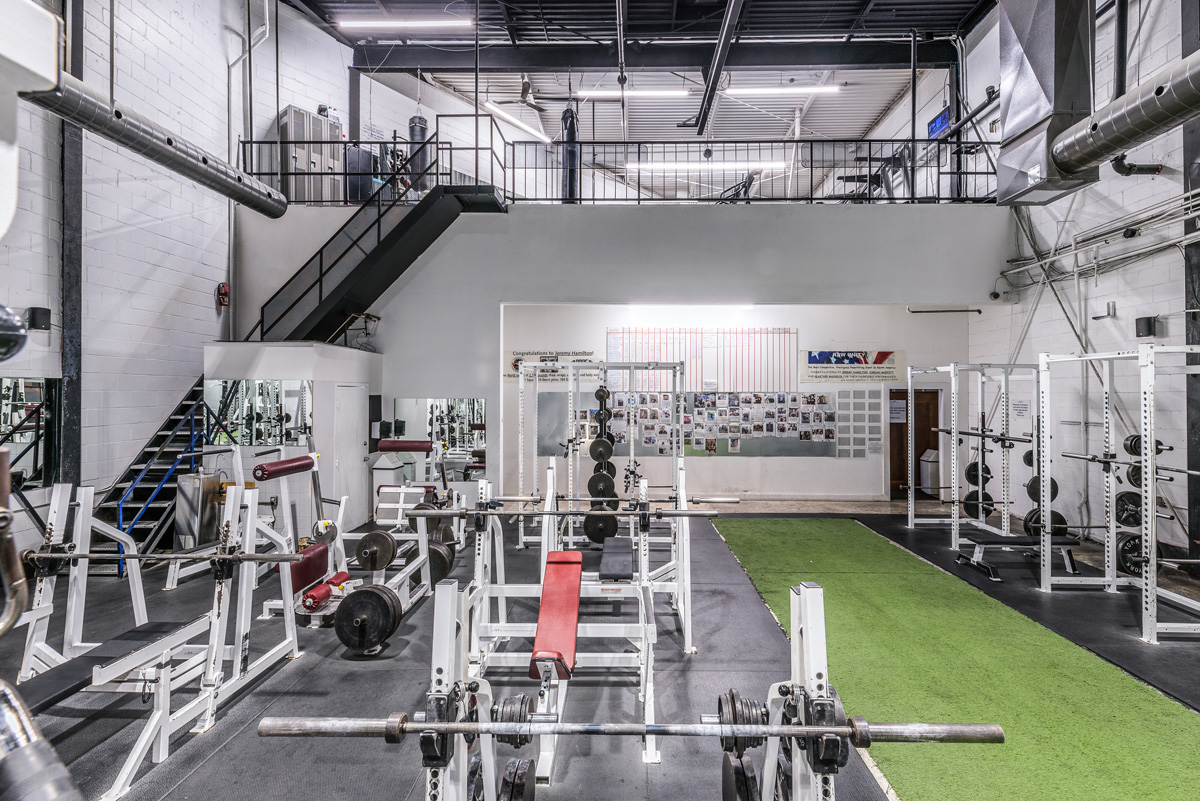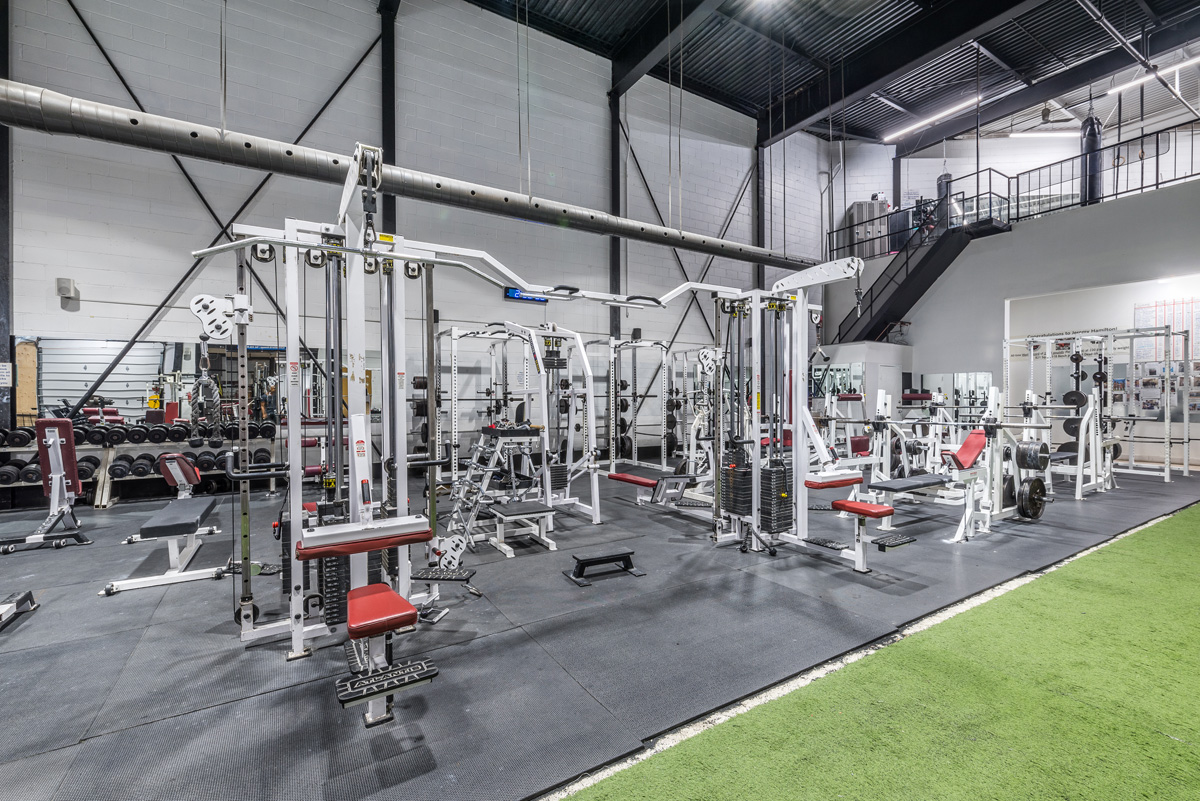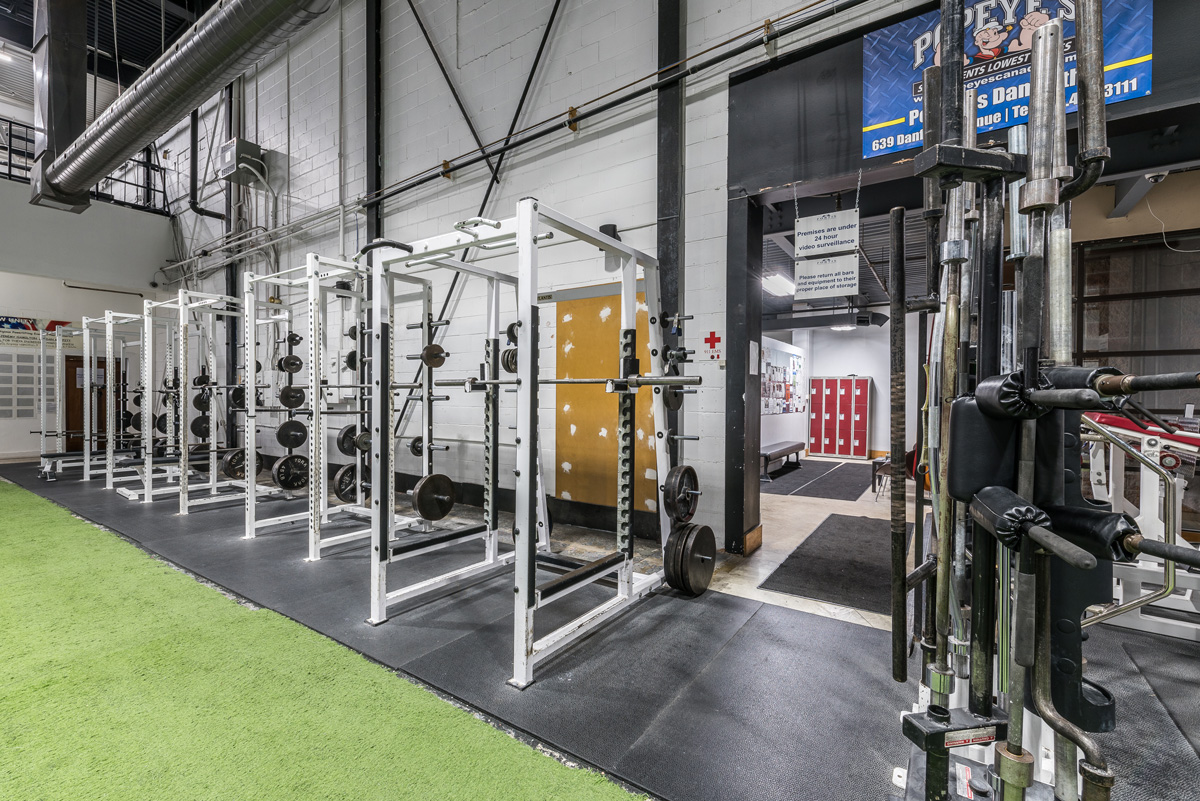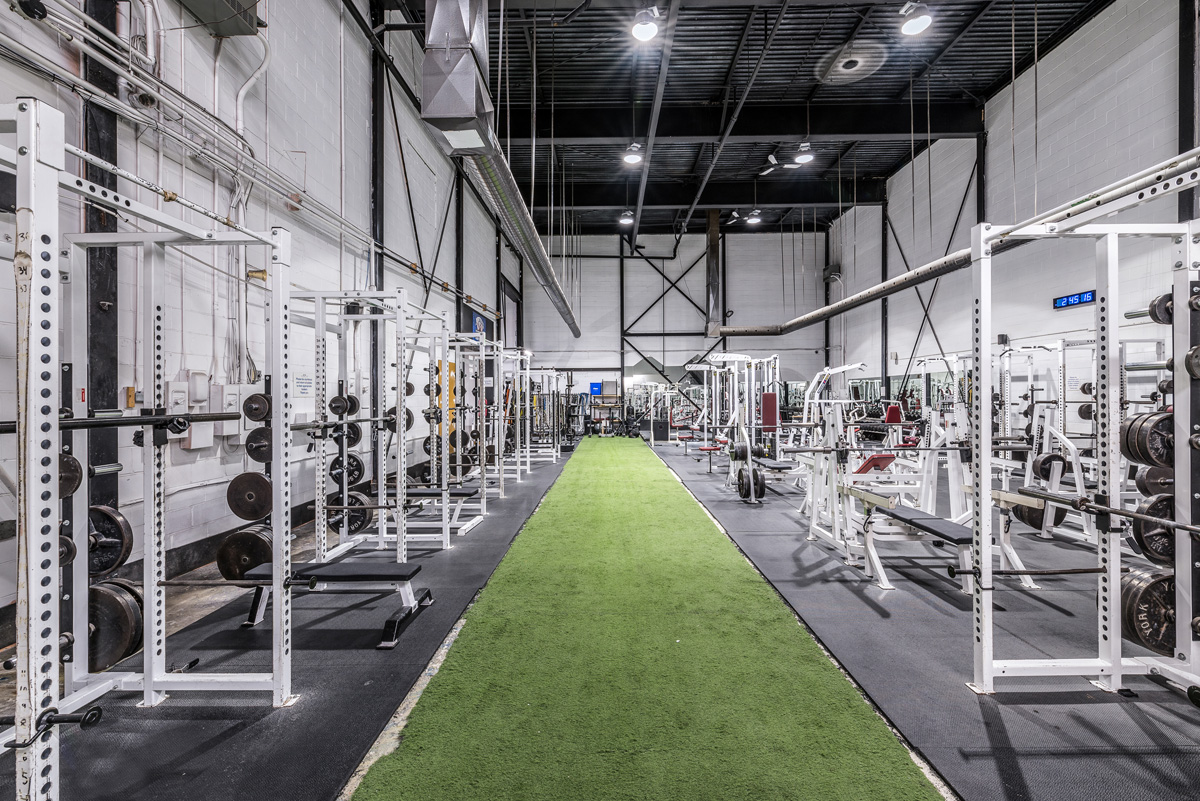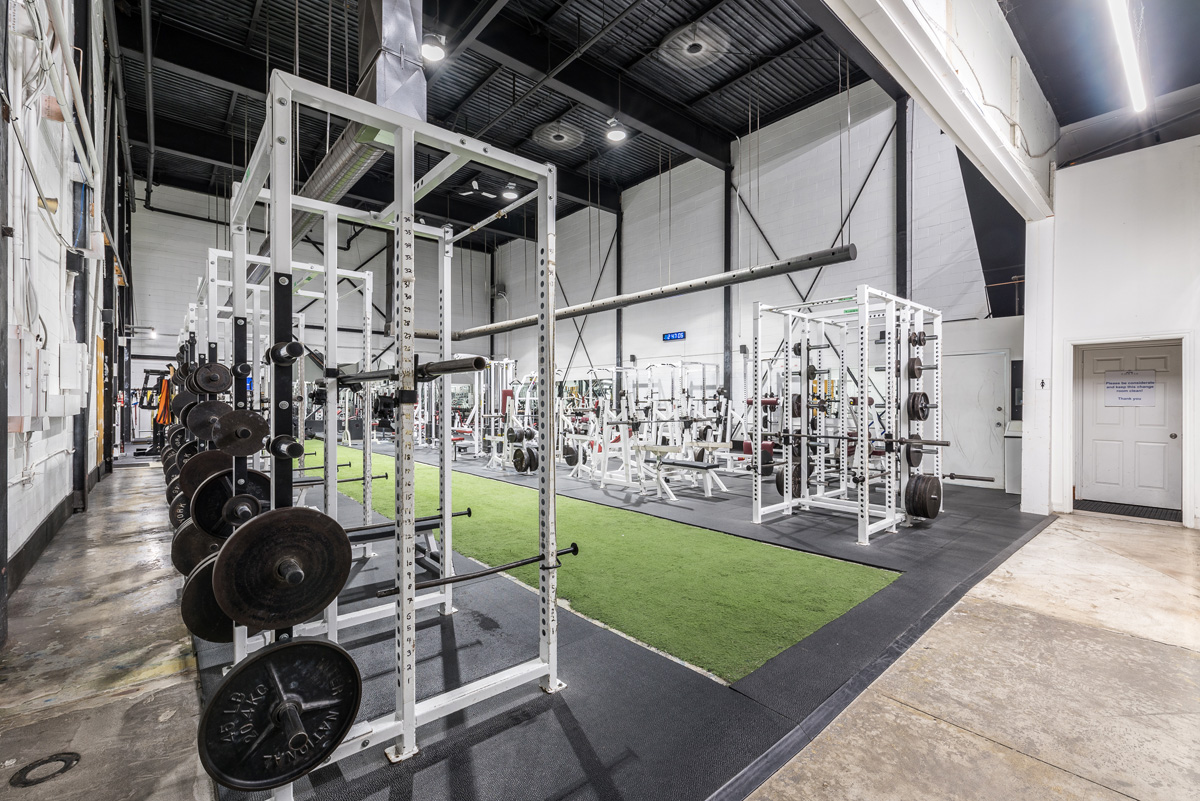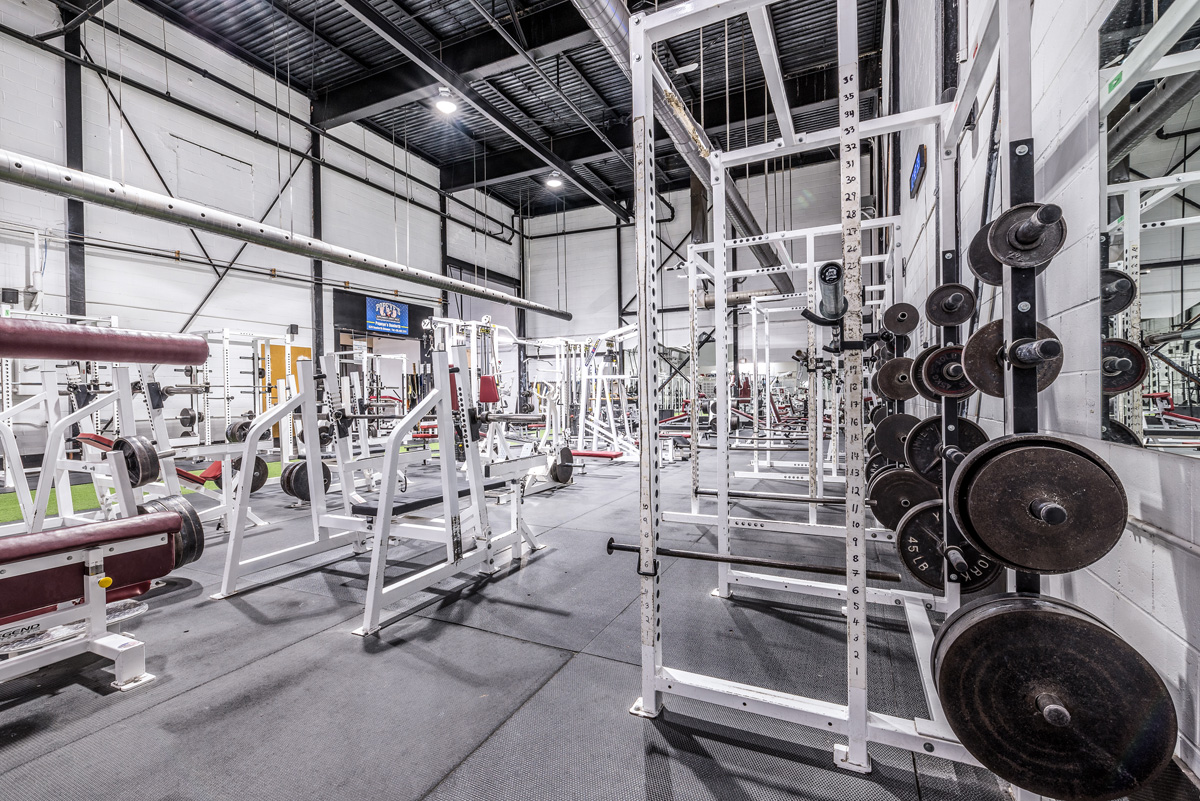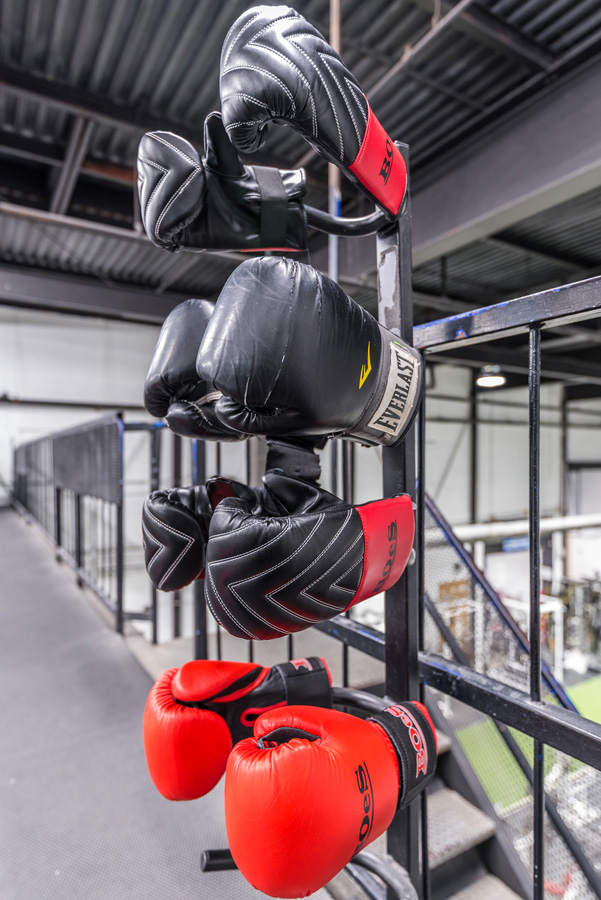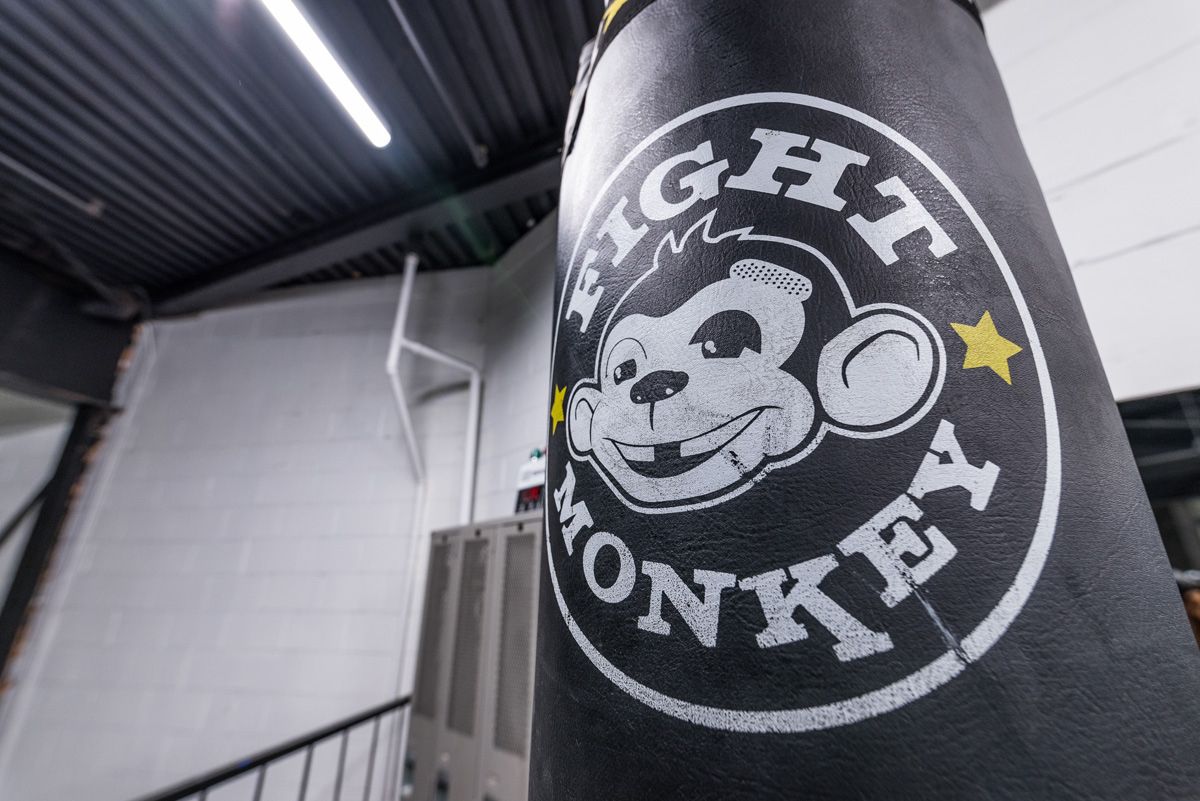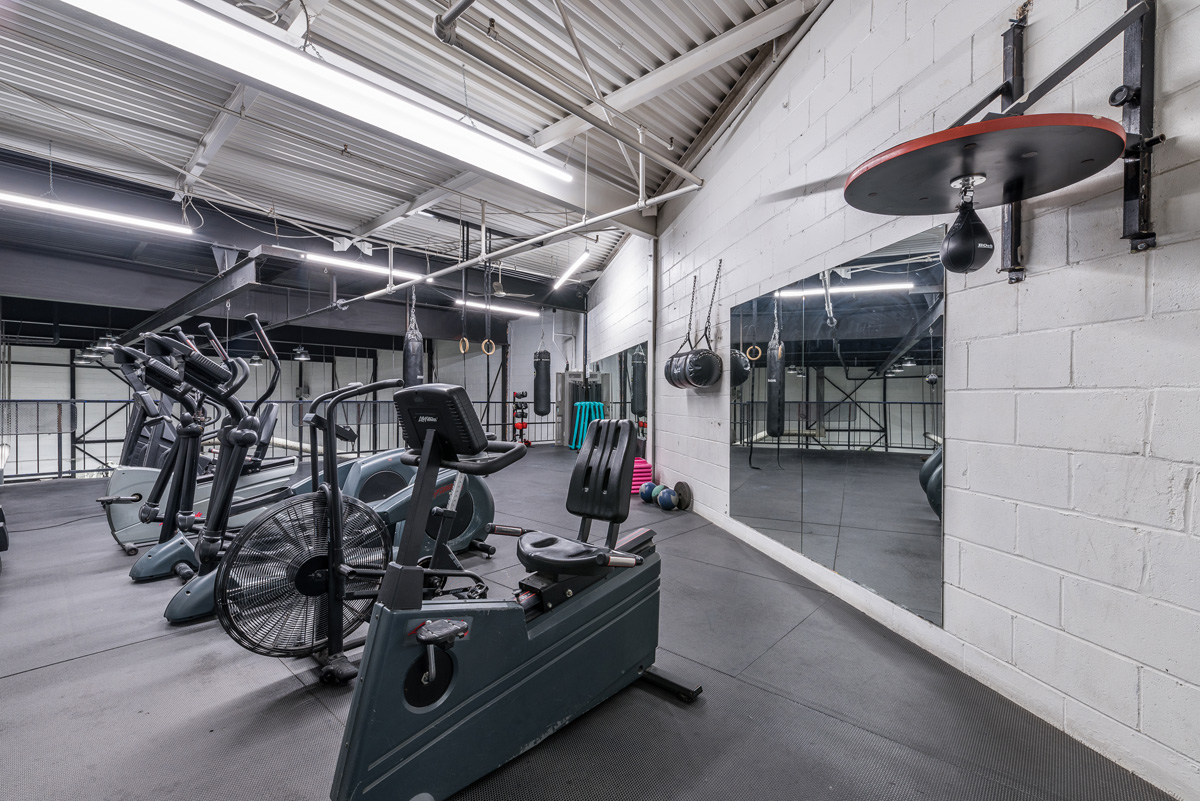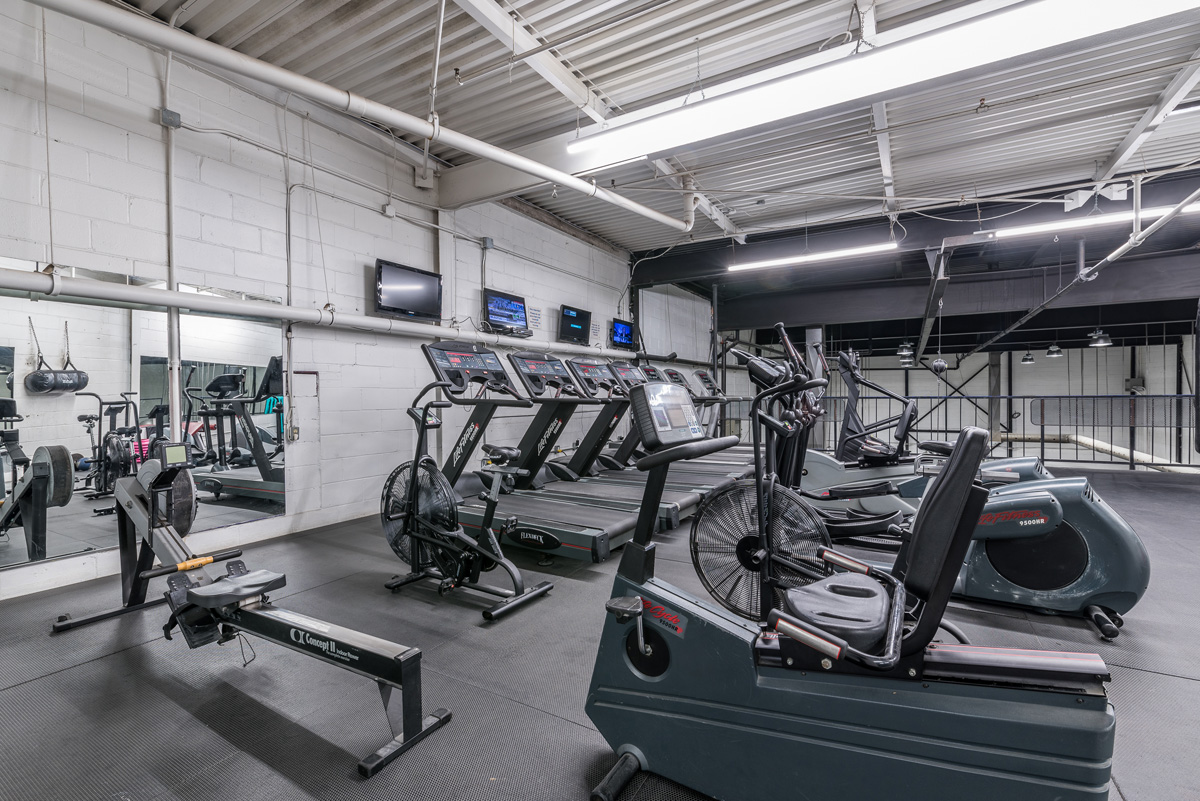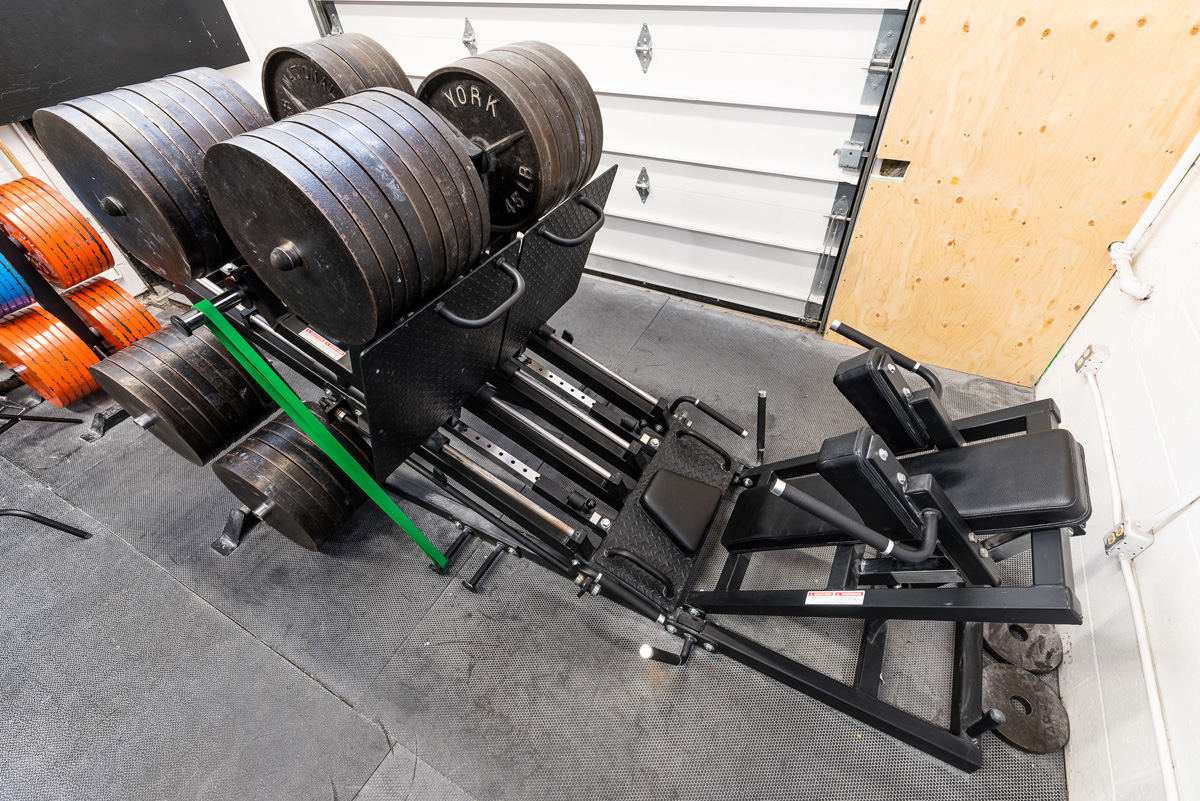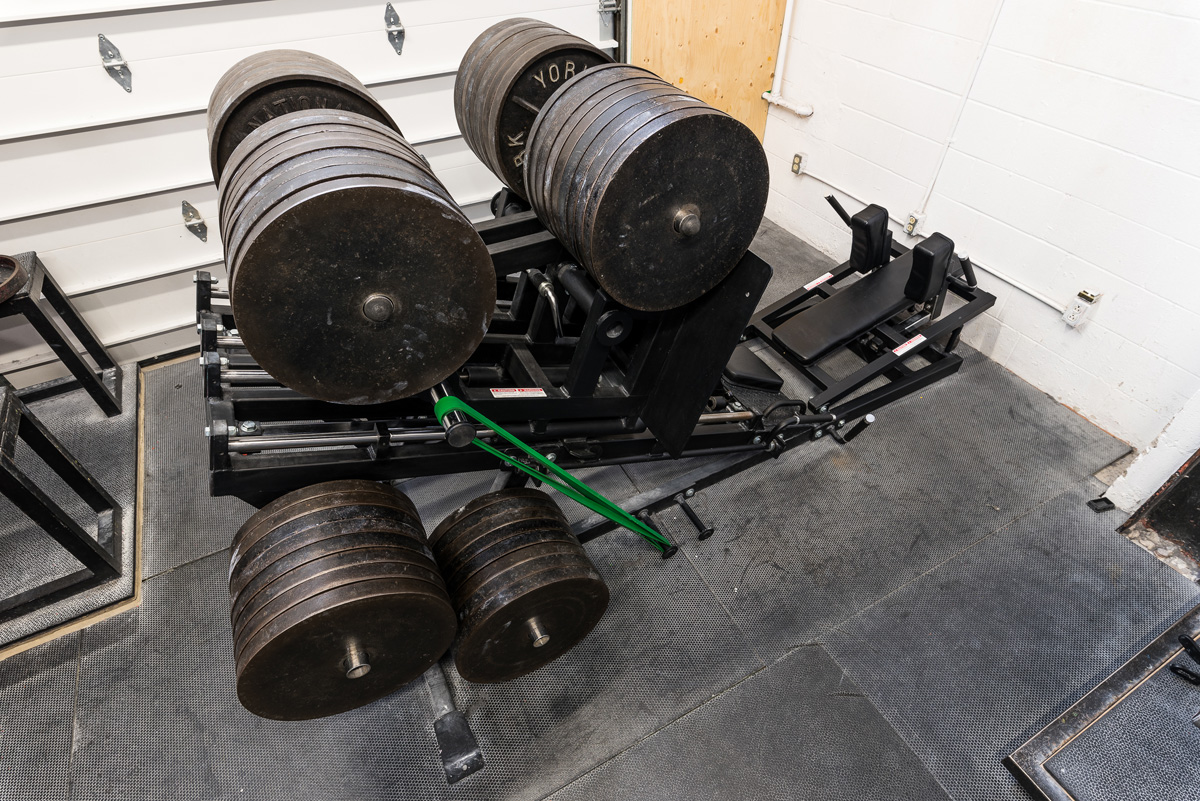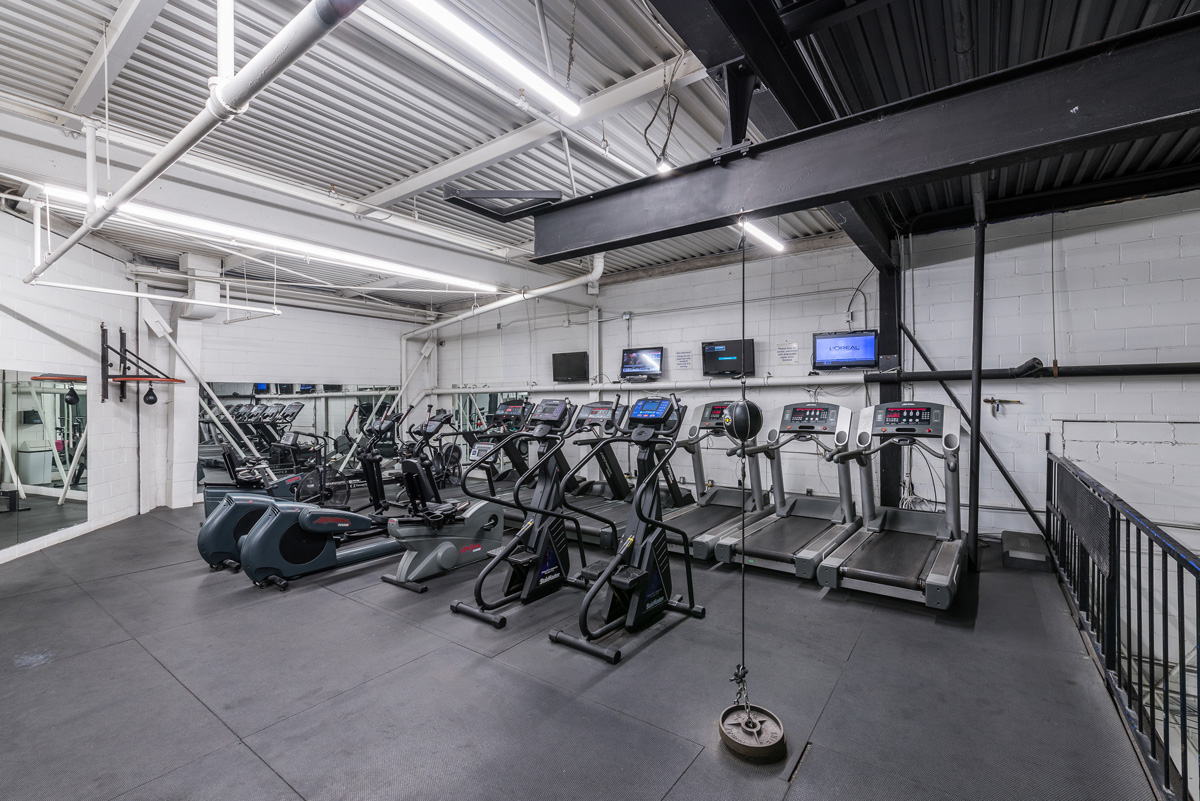At Fortis, we have chosen our equipment very carefully. This equipment changes occasionally due to upgrades, expansions, etc. While there is too much to list entirely, some of the primary equipment we are pleased to offer our members include the following:
- Arm Wrestling Table – Combat Arm Sports Pro-Arm Wrestling table
- “Assault” Bikes
- 100 Pound Plates
- 2 Full Sets Of Plyo Boxes
- Atlantis 8 Stack Machine (Stacks Go Up To 310 Pounds)
- Atlantis Chin-Dip Assistance Machine
- Atlantis Kneeling Leg Curl
- Back Extension
- Bands – Multiple Singles And Sets
- Bar Jacks
- Belt Squat – Matt Wenning’s Ludus Magnus, plate loaded
- Belt Squat Platform And Harness
- Board Press Boards
- Box Squat Platform
- Bridge Bench (For Safe, Comfortable Hip Bridges Off The Floor With Hundreds Of Pounds)
- Buffalo Bar
- Bumper Plates – “Eleiko” In Kilograms And Calibrated
- Calf Machine, Seated
- Calibrated Competition Power-Lifting Plates – Over 1500 Kg.
- Cambered Bench Bar
- Cambered Squat Bar
- Capp Texas Power Bars
- Catch Chains
- Chains From 20, 30 And 40 Pounds Per Chain (Multiple Sets) For Accommodating Resistance
- Chalk (Our Bowls Are Always Full)
- Chest Supported Row – Fortis
- Circus Dumbbell – smaller version
- Competition Bench Press – Gliding Bar Holders And Full Body Face Saver – 3
- Competition Judo/Gymnastics Mats – 500 Square Feet
- Competition Olympic Weightlifting Bars (Men’s And Women’s)
- Concept II Rowers
- Dead-Lift Platforms With Band Hooks For Band Resistance – 4
- Deluxe Calf-Glute-Ham Raise
- Dip Rack – Heavy Duty, For Weighted Dips
- Dumbbells – 2 Sets From 5 To 50 Pounds
- Dumbbells – Set (Metal) From 5 To 180 Pounds
- Dumbbells – Set (Rubber) From 5 To 100 Pounds
- Elliptical Machines “Life Fitness”
- Farmer’s Walk Bars
- Fat Bars
- Football Bar
- Frame Carry – Mike Bartos Strength
- Free Weight Chest Supported Row Bench
- Incline Bench – Gliding Bar Holders And Full Body Face Saver
- Isolateral Rowing Machine
- Ivanko Competition Olympic Bars
- Kettle-Bells – 2 Sets From 5 To 56 Kilograms
- Kettlebells 68, 80 and 92 kg. (that one’s over 200 lbs)
- Landmine
- Leg Press – Fortis
- Low Bar Position Safety Squat Bar
- MAG grips
- Micro-Plates
- Monolift – Westside
- Ohio Power Bars – 20 Kg Olympic Bars
- Olympic Jerk Boxes – Metal, Heavy Duty
- Olympic Lifting Platforms – 7
- Olympic Squat Stands – 3
- Power Keg – 100 Lbs (Loadable To 500 Lbs) – Mike Bartos
- Power Racks – 8 Feet High, 2 Inch Pin Increments, Band/Chain Resist/Assistance – 17
- Power Squat/Hack Squat Machine
- Prowler And Sled (70 Feet Of Indoor Astro Turf Where We Use Them)
- Punching bag – Century “Bob” XL – Body Opponent Bag
- Punching Bags, Stability Balls, Smash Balls, Skipping Ropes, Ab-Wheels, Foam Rollers, Etc.
- Rear Delt
- Regular And Recumbent Bikes “Life Fitness”
- Rowing bar – Olympic (our own)
- Rings
- Safety Squat Bar – “Crepinsek”
- Sand Bags – 50, 100, 150, 200, 250 And 300 Lbs.
- Stair Master Stepmill 7000 PT
- Stepping Machines
- Step-Up Platform
- Stone Of Steel 17 Inch 100 Lbs (Loadable To 300 Lbs) – Mike Bartos
- Stone Of Steel 20 Inch 130 Lbs (Loadable To 450 Lbs) – Mike Bartos
- Strongman Car-Jack Dead-Lift Bar
- Strongman Circus Dumbbell (100 Lbs To 400 Lbs)
- Strongman Log Bars (140 And 90 Pounds)
- Strongman Sand Bag (100, 200, And 300 Pounds)
- Strongman Yoke (200 Pounds)
- Swiss Bar
- Texas Dead-Lift Bars
- Texas Squat Bars
- “Thompson Fat Bells”
- Treadmills – “Life Fitness”
- Unilateral Leg Press
- Versa Climber – CM Club Commercial model
- Viking Press – Olympic bar attachment
- Wall Squat Machine – Fortis
- Westside Deluxe Supreme Reverse Hyper
- Westside/Dynabody Monolift
- Westside Earthquake Bar
- Westside Gravity Crunch
- Westside Hip-Quad
- Westside Inverse Curl
- Wooden Olympic Bars And Training Plates
- Zercher Squat Harness
There are great reasons why we do not have a predominance of the muscle isolating gym machines so common at many contemporary gyms.
Please click here for an explanation:
Why don’t we have more muscle isolating gym machines here at Fortis?
Because they are an inferior method of training for the following reasons:
- The nervous system controls the muscles and the relationship between the two is referred to as neuromuscular. Common neuromuscular patterns in humans have developed naturally over millions of years and are invariably free movements in 3 dimensional space. They include squatting, pushing, pulling, stepping, walking, running, etc. We use these movements everyday in sports, work, and life in general. When we use isolating gym machines we neglect these normal human biomechanical movements and their improved function.
- Machines force the body to move in a pre-determined pattern according to the design of the machine. This can cause unnatural movement modifications leading to injury. Alternatively, free weights allow weight to be moved in exactly the way the body was designed to move it. Thus, free weights allow the free expression of every person’s unique movement pattern based on their individual height, limb length, speed, flexibility, and neuromuscular ability among other unique physical characteristics.
- Machines contribute little if anything to one’s ability to balance, control, synchronize, or coordinate movements, especially under a load. Free weight movements contribute enormously to the development of all these abilities.
- Machines will not train and develop the correct motor efficiency, or motor ability that occurs in an unencumbered movement in free space, such as in a particular sporting movement. This is especially true in attempting to correctly imitate such a movement according to the principle of “specificity”. Here, isolating gym machines fail miserably and will actually disrupt correct sporting movements causing a marked decrease in performance. Conversely, free weight exercises allow for optimum specificity and improvement of such a movement.
- Proprioception is defined as: “The unconscious perception of movement and spatial orientation arising from stimuli within the body itself. The stimuli are detected by nerves located in the inner ear, joints, tendons and elsewhere in the body“. Since machines usually stabilize major regions of the body and limit the number of joints which move, they diminish one’s ability to move freely in 3 dimensional space, and thereby “shut out” or “turn off” naturally occurring proprioception.
- Kinaesthetic sense is defined as: “The sensory awareness of where the body and its components are in space and time” (Siff). Kinaesthetic sense is enabled via proprioception. Using machines can disable proprioception and as a result, kinaesthetic sense is neither engaged nor improved.
- Using machines, joints can be over-stressed in unnatural ways. Whereas with free weight movements joints are strengthened properly using biomechanically correct movements according to the SAID principle (specific adaptation to imposed demands).
- Many machines do not allow for a “pre-load” of the weight which will naturally protect a joint by preventing the sudden “jerking” of the load. Conversely, a pre-load will automatically occur when one simply picks up a free weight just prior to starting an exercise movement.
- When a machine prevents any joint from moving as it naturally would there will be increased stress on adjacent joints. For example, the seated leg extension machine tends to immobilize the hip joint so that an unnatural and high degree of stress falls on the knee joint.
- Most machines operate on the “peak contraction theory”, meaning that you start the movement with a maximum effort even though you are in the weakest mechanical position (Ex. pec machine, seated bench press, shoulder press machine). This can be dangerous and cause injury.
- Machines do not adequately “match” the relationship between resistance and acceleration in the changing range of any movement. That is, when a person speeds up or slows down a movement as the weight feels lighter or heavier depending on its range in the movement. Free weights, on the other hand, will always allow the perfect, unfettered increase or decrease in the speed with which one moves a weight based on an individual’s unique strength, joint angle and position.
- Ironically, muscle isolation is a fallacy, since when full efforts are put forward even when using isolating machines, other smaller muscles including neutralizers, stabilizers, and assistance muscles are automatically contracted isometrically because that is how our neuromuscular systems work to augment any full muscular effort. Yet with machines, these indirect muscles are still not even contributing to balance or stability. Only low intensity activities such as blinking of the eyes or piano playing represent a true isolation of certain muscles groups.
- Isolating gym machine exercises will not deliver a hormonal response to the same degree as compound free weight movements.
- Isolating gym machine exercises will not provide the same degree of increase in resting metabolic rate that free weight exercises will deliver. Higher increases in resting metabolic rates provide dramatic increases in fat loss.
- Seated resistance machines can create stresses and pressure on the discs of the lower back that can be up to 90% greater than equivalent free weight standing exercises. This is because when standing, one is able to absorb the shock of the load with the knee, hip, and ankle joints. These dangers are exacerbated when an individual begins and ends the movement in a “jerky” manner by starting machine movements in the weakest position and with no “pre-load” of the weight.
- By strengthening the muscles ONLY in the unusual patterns dictated by isolating fitness machines; the bones, joints, and connective tissue are ignored. This lack of engagement will cause them to become weak. Subsequently, when one is put into a position where the correct biomechanical movement is required, injury to these “weak links” is far more likely. Ignoring the development of balance and coordination by using these isolating machines can easily cause injury for the same reason.
- Isolating machines are exceedingly inefficient compared to free weight, multi-joint compound movements. For example, the # of machines required to rival the effects of the following free weight movements are as follows:
- Squat = 4 machines
- Dead-lift = 5 machines
- Clean & push press = 12 machines
- Regardless, balance, control, coordination, other physical synergies and the ability to perform the actual movement in its entirety would still be lost even if the muscular contraction in these exercises was imitated by numerous isolating machines.
- Bone is living tissue that responds and adapts to stresses, just like muscle, connective tissues, skin, the CNS (central nervous system), the brain and many other non-muscular components of the body. Loading the skeletal system with free weights that must be held and supported will increase bone density, as bones become harder, stronger, and more dense in response to heavier loads.
- The top athletes in the world use predominantly functional free weight exercises over non-functional isolating resistance machines because they are proven to work better to improve performance in their respective sports. There is an enormous body of comparative research regarding the best ways to achieve maximal physical performance. The strong conclusions provided by this scientific information and the results of the athletes themselves provide enormous credibility for the use of free weight exercises over contemporary isolating gym machines.
- Isolating fitness machines, by their very nature “lock” the user into the completing only one specific exercise pattern. Similarly, all other aspects of the exercise are often dictated by the machine, including speed of movement, type of resistance, range, etc. These restrictive limitations result in “neuro-muscular fatigue” and “accommodation” (lack of new adaptation). These are just clinical terms for the rather simple idea that your mind and body “get sick and tired” of completing the same exercise over and over again. This predicament is manifest via plateaus or decreases in strength. The physical results this equipment is supposed to create – creation of attractive new muscle, etc – will then also stop. In many cases, even though we continue to “do our work” at the gym, these results can even diminish. Research shows that these regressions generally occur in under 3 months time.
“It’s a statistical fact that 93% of people quit going to the gym or quit using their home equipment in the first 90 days” (quickgymcs.com)

